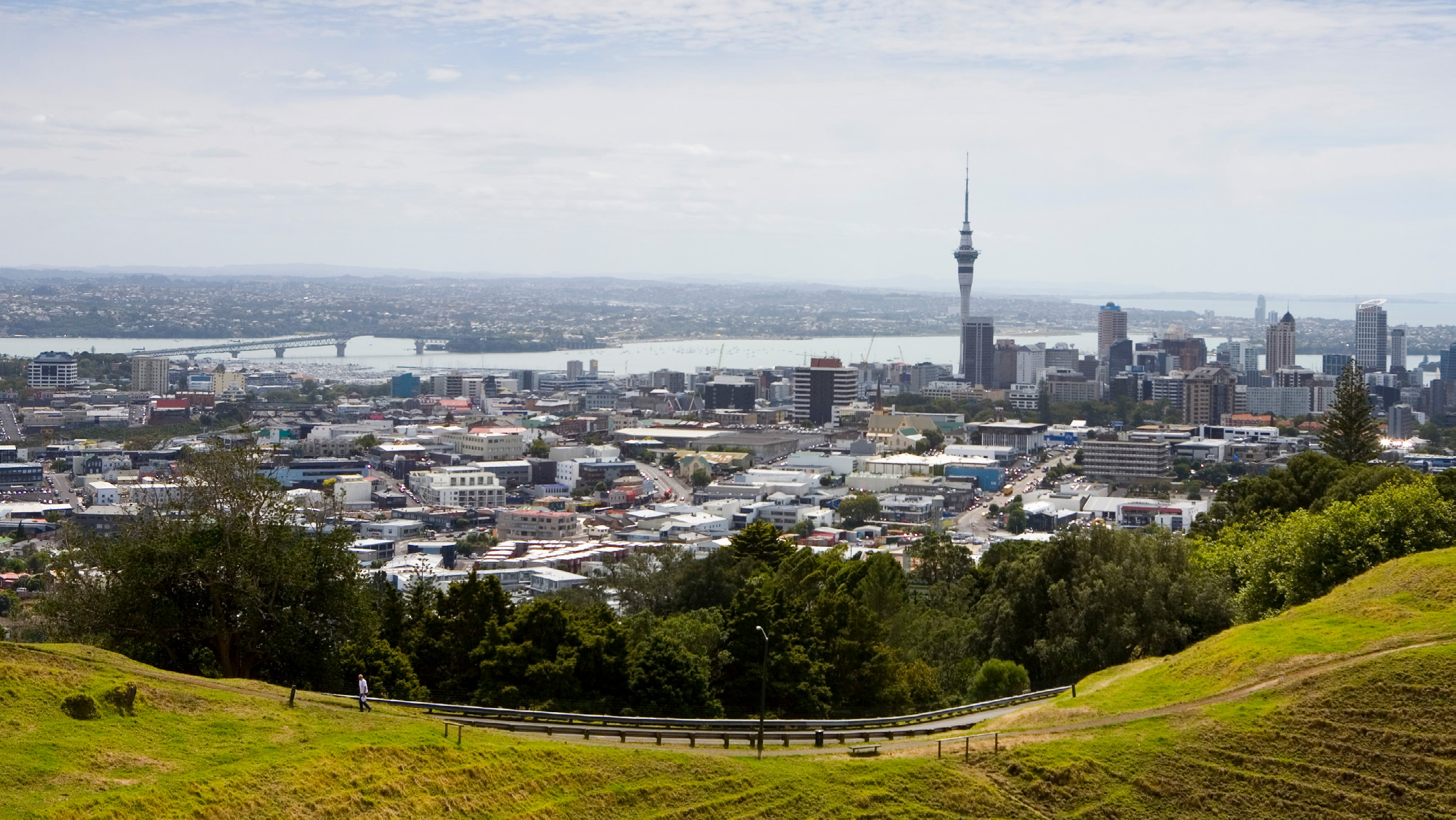

Te pūrongo ā-tau a te Puka Here Kākāriki 2021/2022
Green Bond Annual Report
2021/2022
AUCKLAND COUNCIL
link to page 3 link to page 4 link to page 5 link to page 6 link to page 7 link to page 8 link to page 9 link to page 13 link to page 33 link to page 40 link to page 49
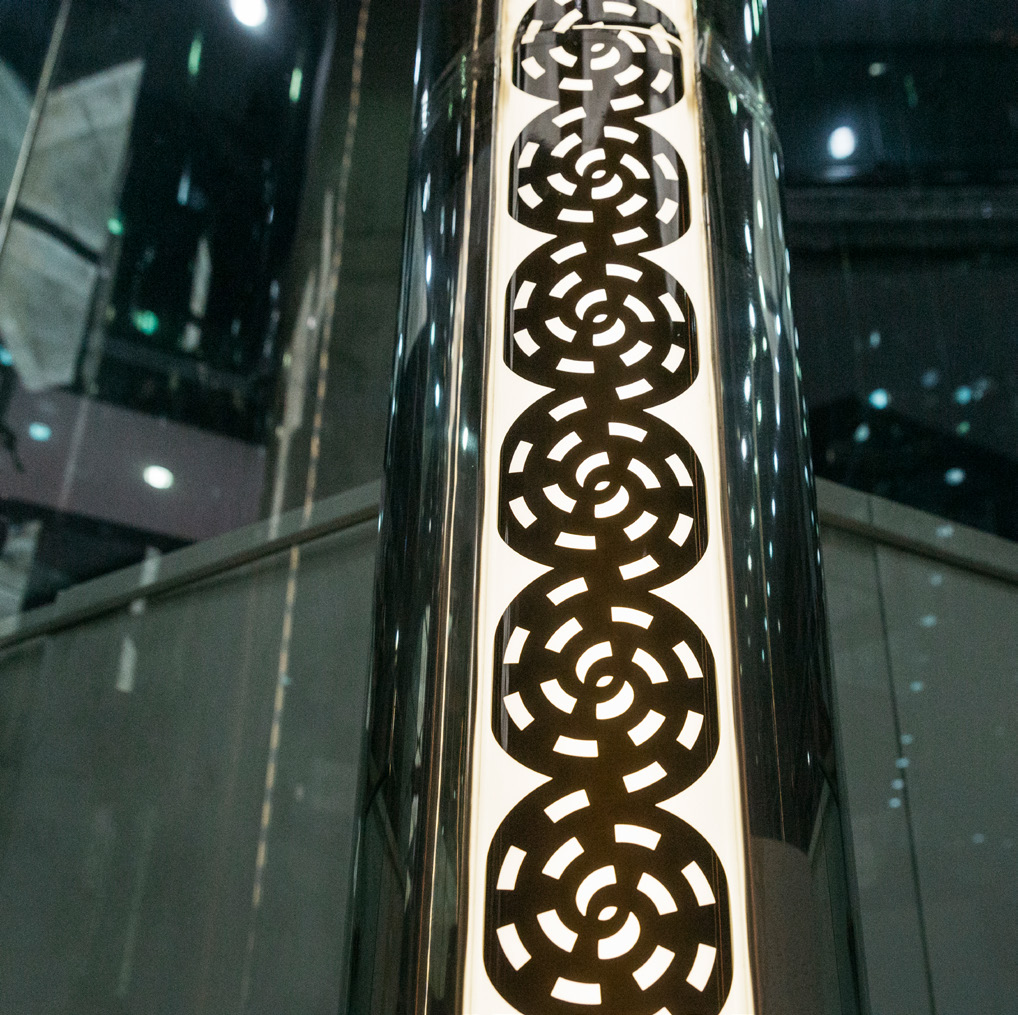
2 | Green Bond Annual Report 2021/2022
Ngā ihirangi
Contents
From the CEO
3
Introduction 4
Our sustainable finance journey
5
Use of proceeds
6
Value of green bonds on issue
7
Overview of green bond issue
8
Impact of our green bonds
9
Appendix 1 – Impact of our green bonds
13
Appendix 2 – Value of eligible assets at 30 June 2022
33
Appendix 3 – EY Independent Assurance Report
40
Appendix 4 – Toitū Envirocare – Review of Impact
49


3 | Green Bond Annual Report 2021/2022
He kupu mai i te Tumu Whakarae
From the CEO
2022 has been another successful year for Auckland Council’s green bond
states that Auckland’s emissions are not tracking in line with the regions
programme with the issue of two green bonds totalling NZD$1.1 billion.
target to reduce emissions by 50 per cent by 2030.
We also expanded our eligible asset pool with the addition of Te Manawa,
The council takes its commitment seriously of ‘redirecting capital towards
Westgate’s multi-purpose community facility. The addition of this asset
sustainability outcomes, improving how we value social and environmental
enables the growth of our green bond programme and supports our
impacts and building awareness and capacity in the financial sector more
commitment to ‘issuing most of our debt in our name using green bonds’.
broadly’ and will continue to advocate to and partner with stakeholders
To further solidify our broader commitment to sustainable finance, Auckland
across Auckland to support fossil-free and sustainable investments.
Council became a signatory to the C40 Divest/Invest declaration in August
Transparency and disclosure are key to the success of sustainable finance,
2021 and has committed to:
which is why we continue to report against the Taskforce on Climate-related
• divest from fossil fuel companies and increase our financial
Financial Disclosure Framework. Auckland Council’s third climate disclosure
investments in climate solutions to help promote decent jobs
provides investors with information on how the Auckland Council Group
and a just and green economy
is managing its climate risks and how climate risk is embedded into our
• advocate for investments in climate solutions and divestment
strategic and financial planning processes. Managing our climate
from fossil fuel companies by other stakeholders.
risks is a key part of our organisational resilience and is
a priority for the council group.
This includes diversifying our use of sustainable finance products which saw
the council issue its first sustainability linked loan and derivative.
Thank you for your support and enabling the continued
Earlier this year, Auckland Council’s Governing Body adopted the first
climate action targeted rate (CATR), a major win for the region and climate
change. The CATR will raise $57 million a year to accelerate the purchase of
Jim Stabback
electric buses and ferries, expand public transport and active modes, and
Chief Executive
increase our planting as part of our Urban Ngahere programme.
In addition, the council released its
first progress report against
Te Tāruke-ā-Tāwhiri: Auckland’s Climate Plan (the climate plan) which
4 | Green Bond Annual Report 2021/2022
Kupu whakataki
Introduction
Auckland Council is the territorial authority for the Auckland region,
The plan has two core goals:
responsible for enabling democratic local decision-making and action, by
• reduce greenhouse gas (GHG) emissions by 50 per cent by 2030 and
and on behalf of communities. This includes promoting the social, economic,
achieve net zero emissions by 2050
environmental and cultural well-being of Auckland communities.
• adapt to the impacts of climate change by ensuring we plan for the
The Auckland Council Group (the group) is made up of Auckland Council (the
changes we face under our current emissions pathway.
council) and five substantive council-control ed organisations (CCOs) that
Green bonds are a continuation of our commitment to these goals and allow
include Auckland Transport Limited, Watercare Services Limited, Eke Panuku
us to align our funding streams to our climate response and support the
Development Auckland, Tātaki Auckland Unlimited, and Tātaki Auckland
broader shift to a more sustainable financial system.
Unlimited Trust. Auckland Council is responsible for funding the CCOs.
The council has been active in the green bond market for four years, with a
The group’s vision for how Auckland will grow over the next 30 years is
total of $1.96 billion raised in green bonds since 2018.
outlined in the Auckland Plan 2050 which responds to the three major
challenges facing the region:
The council recognises that climate change is one of the biggest challenges
facing the Auckland region and is committed to deliver meaningful
• population growth and its varied implications
environmental and social outcomes through sustainable finance.
• sharing the benefits of growth equally among all Aucklanders
In this report, you will find a detailed update of our green bond activities,
• reducing environmental degradation.
use of proceeds and impact reporting for our eligible assets, covering the
The group has plans and strategies to support the delivery of the Auckland
12-month period from 1 July 2021- 30 June 2022.
Plan 2050, including Te Tāruke-ā-Tāwhiri: Auckland’s Climate Plan,
Auckland’s regional response to climate change.
5 | Green Bond Annual Report 2020/2021
Tā mātou hīkoi ā-tahua pūtea tokonga roa
Our sustainable finance journey
April 2018
T
he council establishes its Green Bond Framework
July 2020
(changed in 2020 to a Sustainable Finance Framework).
The gr
oup adopts Te Tāruke-ā-Tāwhiri,
June 2018
Auckland’s Climate Plan.
Auckland signs the
The council issues its first green bond, raising $200
September 2020
February 2022
million to fund electric trains and associated infrastructure.
Paris Pledge for Action
The council issues $500 million
The council executes its first
of 30-year fixed rate green bonds.
Sustainability-linked loan and derivative.
in support of the objectiv
es in the Paris
Auckland Council becomes a member
Agreement to limit global temperature rise to
of the Climate Leaders Coalition
September 2020
June 2022
less than 2 degrees Celsius and raise ambition
committing to alignment with the Paris Agreement, public transparency on emissions, setting
The group publishes its inaugural
The council adopts its first
before the agreement takes effect in 2020.
targets for emissions reductions and influencing emissions reductions in supply chains.
climate-related risk disclosure.
Climate Action Targeted Rate.
2016
2018
2020
2022
2015
2019
2021
Auckland joins the C40 Cities
Auckland Council becomes a founding
June 2019
August 2021
Climate Leadership Group
member of the Aotearoa Circle’s
The council publishes its fir
st Annual Green Bond report.
The council becomes a signatory
C40 membership enhances and resources
Sustainable Finance Forum
June 2019
to the C40 Divest/Invest Declaration.
Auckland’s ability to work with and learn
September 2021
from leading cities facing similar climate
The Mayor signs the Global Green
Auckland declar
es a Climate Emergency which includes
The group publishes its second
challenges around the globe.
New Deal
the requirement to include climate impact statements in
reaffirming Auckland’s commitment to
all Auckland Council committee reports.
climate-related risk disclosure.
protecting our environment, strengthening our economy
and building a more equitable future.
July 2019
November 2021
The council issues its second green bond and $150
Te Tāruke-ā-Tāwhiri: Auckland’s Climate Plan:
million is raised to fund electric trains and cycleways.
Progress report is released.
November 2021
The council issues its first foreign currency denominated
green bond of EUR 500 million 10-year fixed rate bonds.

6 | Green Bond Annual Report 2021/2022
Te whakamahi i ngā moni whiwhi
Use of proceeds
The council has allocated proceeds of the green bonds to financing planned
The eligible assets have been mapped against the relevant United Nations
projects and assets with positive environmental and social outcomes which
Sustainable Development Goals (UN SDGs) and priority areas in
conform to the eligibility criteria (see eligible assets table – Appendix 2), or
Te Tāruke-ā-Tāwhiri: Auckland’s Climate Plan, see Appendix 2.
to refinance corporate debt that supports eligible assets. The proceeds of
Limited assurance was carried out against the International Capital Market
green bonds have been allocated across several eligible sectors described
Association (ICMA) Green Bond Principles (GBP) criteria and the eligible
in our Sustainable Finance Framework.
asset schedule.
For more information, see
Auckland Council’s
Allocation breakdown by sector
Sustainable Finance Framework.
80%
70%
71%
60%
50%
40%
30%
20%
10%
12%
4%
2%
10%
0%
Sustainable water
Low carbon
Sustainable
Energy
Efficient
management
transportation
land use
efficiency
buildings
Eligible Asset Sector % based on asset value
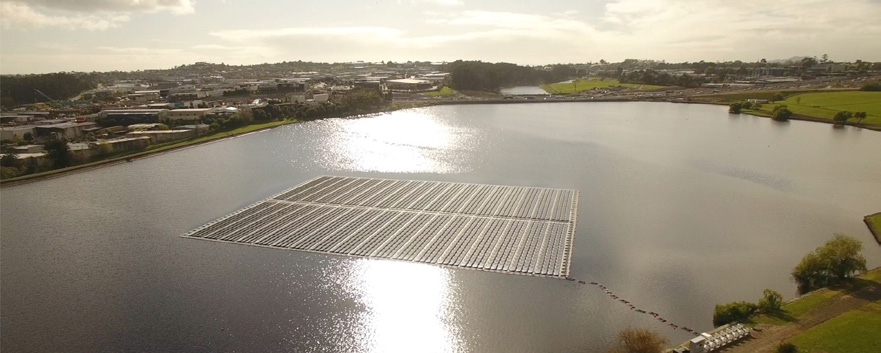
7 | Green Bond Annual Report 2021/2022
Te uaratanga o ngā puka here kākāriki i te wā ka puta
Value of green bonds on issue
In the financial year 2022 register of green bond eligible assets, the total asset value of our eligible assets was NZ$3,060
mil ion. This means the NZ$1,958 mil ion raised through our green bond issuance makes up 64 per cent of the asset values.
Bond face value
Date of issue
Maturity date
Term
Bond details
Use of proceeds
(NZ$m equivalent)
27 June 2018
27 June 2023
5 years
3.170% CBI Certified, fixed rate retail bonds in NZ$
Refinancing
200
10 July 2019
10 July 2025
6 years
2.013% CBI Certified, fixed rate retail bonds in NZ$
Refinancing
150
28 September 2020
28 September 2050
30 years
2.950% fixed rate retail bonds in NZ$
Refinancing/New projects and assets
500
20 October 2021
20 October 2027
6 years
2.411% fixed rate retail bonds in NZ$
Refinancing/New projects and assets
300
17 November 2021
17 November 2031
10 years
0.250% CBI Certified fixed rate
Refinancing
808
bonds of EUR 500 mil ion
Total
1,958
Te whakaū i tā mātou tohatoha o ngā moni whiwhi me te takoha taurite a ngā puka here kākāriki
Confirmation of our allocation of proceeds
CBI certified bonds/eligible assets
Total (incl. CBI bonds and assets)
Total green bonds outstanding (NZ$m equivalent)
1,158
1,958
Total eligible asset value (NZ$m)
2,143
3,060
Total green bonds outstanding to eligible assets
54%
64%
The council confirms that the value of the eligible assets is greater than the face value of the green bonds outstanding and there are no unallocated proceeds.
The council confirms that the CBI certified bonds issued are aligned with the Climate Bonds Standard and that the nominated projects and assets continue to meet the relevant eligibility requirements specified in Part C of the CBS.
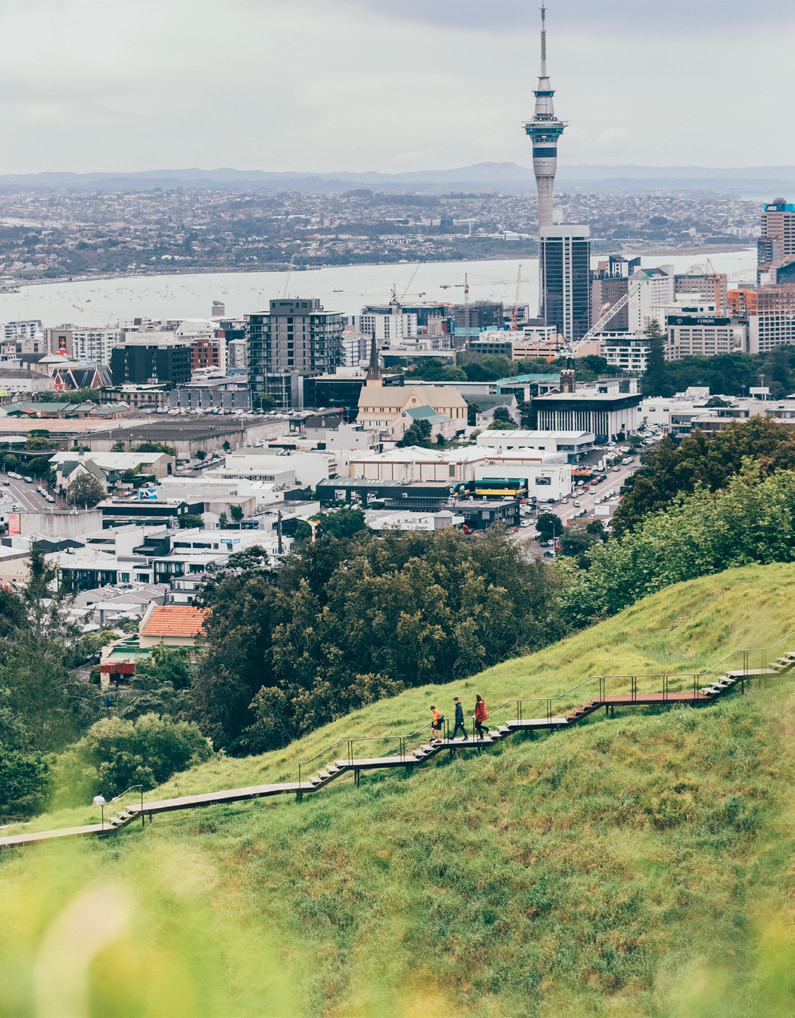
8 | Green Bond Annual Report 2021/2022
Te tirohanga whānui o te kaupapa puka here kākāriki
Overview of green bond issue
In October and November 2021, the council issued two further green
Zealand to date. This bond issuance received several debt
bonds. A NZD300 million, secured 6-year bond and a EUR500 million,
capital market awards for the year.
senior secured, 10-year green bond, the council’s first foreign currency
Key terms of the two new green bonds issued in financial year
denominated green bond.
2022 are shown in the table below.
Prior to these issues, the council issued its first 30-year senior green bond.
It was the largest, with the longest tenor of any green bond issued in New
Bond name
NZD300 million, secured 6-year bond
EUR500 million, senior secured, 10-year green bond
Issue rating
AA (S&P Global Ratings) / Aa2 (Moody’s Investor Services)
AA (S&P Global Ratings) / Aa2 (Moody’s Investor Services)
Instrument
Secured, unsubordinated, fixed rate bonds
Bearer Notes, Reg S Category 1, TEFRA D
Tenor
6 years
10 years
Issue date
20 October 2021
17 November 2021
Maturity date
20 October 2027
17 November 2031
Issue amount
NZD 300 million
EUR 500 million
Coupon
2.411 per cent, per annum
0.250 per cent, per annum
ISIN
NZAKCDT547C9
XS2407197545
Listing
NZX - AKC140
Singapore Exchange (SGX-ST)
9 | Green Bond Annual Report 2021/2022
Te pāpātanga i ā tātou pānga rawa kākāriki
Impact of our green bonds
Funds raised through green bonds to date have been used to finance and
greenhouse gas emissions and achieving broader benefits. We have
refinance debt that funded assets such as the rehabilitation of Puketutu
used appropriate metrics for each category where the measurement
Island, City Rail Link, and water and wastewater infrastructure. The impact
of greenhouse gas emissions is not applicable.
assessment below details the assets’ contribution towards reducing
Te whakarāpopoto mō ngā rawa me ngā ine matua
Summary of assets and key measurements
Low carbon transportation:
Auckland’s public
Electric trains
Wiri Electric
cycleway network
Switching Auckland’s train
Train Depot
Increasing accessibility and
fleet from diesel to electric.
Maintenance and stabling
safety for people on bicycles.
Measure: 19,261 tCO2e
facility for electric trains.
Measure: 2.7 ktCO2e
reduced and avoided.
Benefit: Ensures smooth
avoided.
Asset value:
operation of the electric
Asset value:
trains in the network.
$94m
$516m
Asset value:
$77m
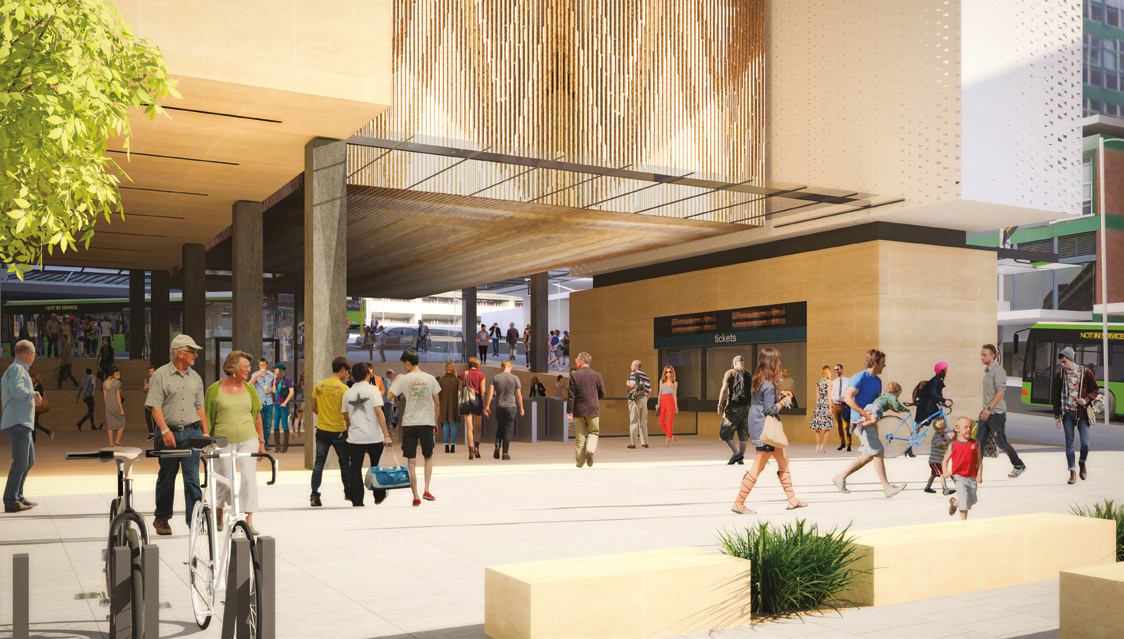
10 | Green Bond Annual Report 2021/2022
Te whakarāpopoto mō ngā rawa me ngā ine matua (e haere tonu ana)
Summary of assets and key measurements (continued)
Low carbon transportation:
City Rail Link
Manukau Bus Station
Underground rail link enabling Auckland’s
A South Auckland major
rail network to double in capacity.
public transport exchange.
Measure: Projected carbon reductions:
Benefit: Increased public
• Embodied Carbon: 24,279 tCO2e (15.8 per cent)
transport patronage by
• Construction energy: 6,636 tCO2e (19.3 per cent)
improving frequency,
quality and reliability
• Annual operational energy for the stations, tunnels
of buses.
and streetscape: 296 tCO2e (22.0 per cent).
Asset value:
Asset value:
$1,457m
$11m
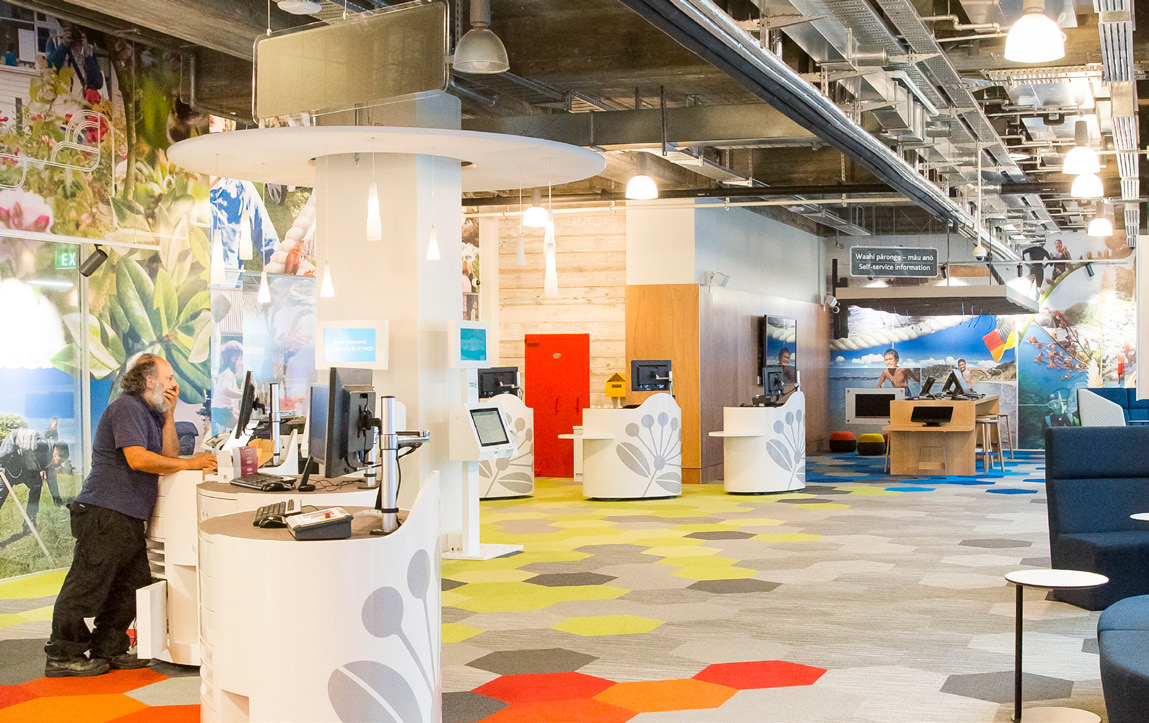
11 | Green Bond Annual Report 2021/2022
Te whakarāpopoto mō ngā rawa me ngā ine matua (e haere tonu ana)
Summary of assets and key measurements (continued)
Energy efficiency:
LED streetlights
Rosedale floating
Reducing energy consumption
solar array
and providing safer environments.
Floating solar panels,
Measure: 3,622 tCO2e reduced
generating clean energy.
and avoided.
Measure: 169 tCO2e
Asset value:
reduced.
$64m
Asset value:
$2m
Efficient buildings:
Auckland Council efficient buildings
NABERSNZ rated buildings.
Measure: 561 tCO2e reduced.
Asset value:
$300m
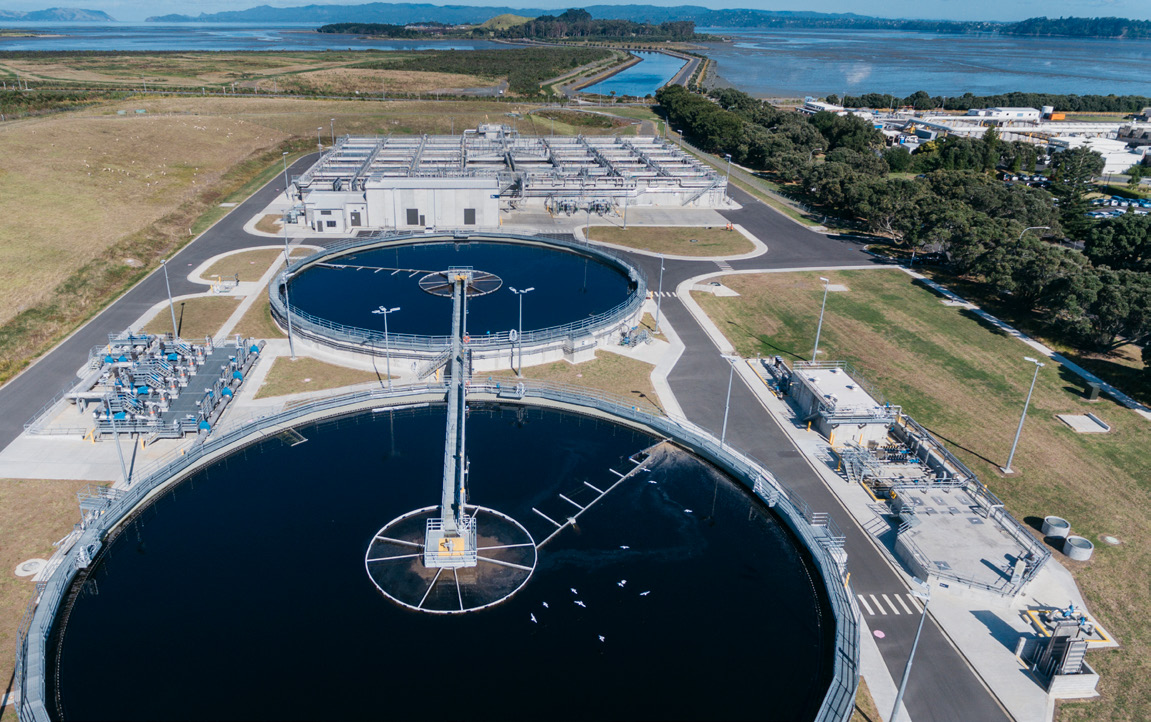
12 | Green Bond Annual Report 2021/2022
Te whakarāpopoto mō ngā rawa me ngā ine matua (e haere tonu ana)
Summary of assets and key measurements (continued)
Sustainable water management:
Fred Thomas Drive
Hunua watermain
Pump station delivering sustainable
Waterpipe providing water
wastewater management services.
supply to high growth areas
Measure: 2,268,855 m3
of Auckland.
of water passed.
Benefit: Provides natural
Asset value:
disaster resilience.
$26m
Asset value:
$350m
Sustainable land use:
Puketutu Island
Quarry rehabilitation project for wastewater
biosolids to avoid landfill.
Measure: 122,770 tonnes of waste
diverted from landfill.
Asset value:
$132m
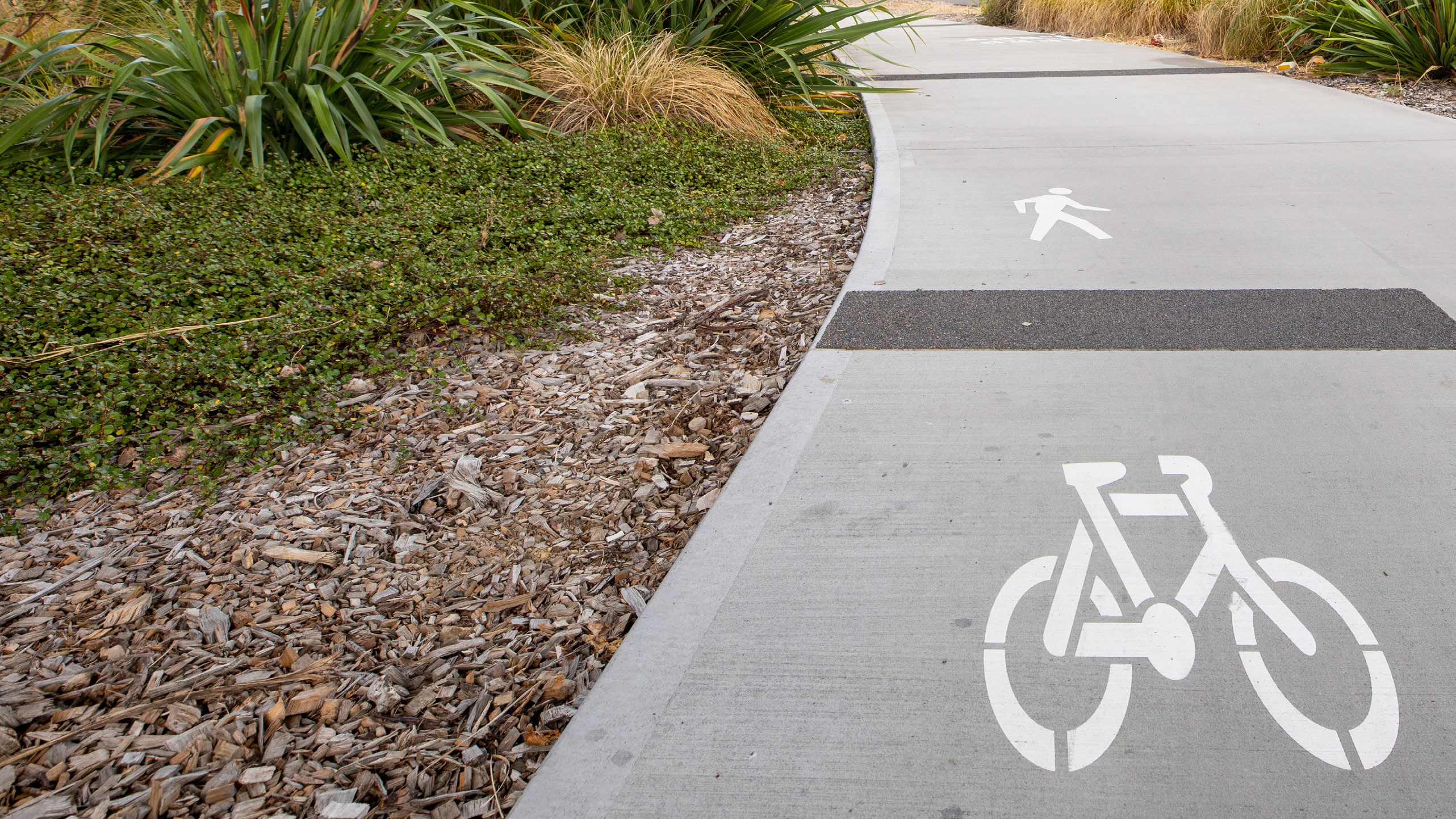

13 | Green Bond Annual Report 2020/2021
Āpitihanga 1 – Te pāpātanga i ā tātou pānga rawa kākāriki
Appendix 1
Impact of our green bonds
14 | Green Bond Annual Report 2020/2021
Ngā tikanga kawekawenga waro-pāpaku
Low-carbon transportation
Ngā ara pahikara tūmatanui
Public cycleways
Introduction
year 2018 and started dropping gradually to 83 million km in the financial
New cycleways have partly enabled the rapid growth of bicycle movements
year 2022 according to th
e Auckland household travel survey. Restriction
and distances travelled by bicycle in recent years (see Figure 1 on page 15).
of travel due to COVID has reduced the movements and travel in the recent
With better network links to public transport hubs, cycling and walking
years. Nevertheless, the expansion of Auckland’s cycleway network delivers
is becoming an easier and more accessible choice, enabling Aucklanders
the following benefits:
to switch their mode of travel from private vehicles to public transport.
• GHG emission reductions by substituting all or part of motorised travel
Auckland Transport (AT) has not only been maintaining and upgrading
with bicycle
existing cycleways but also investing in many new projects to support travel
• increased accessibility and safety for people on bicycles
by bicycle as a safe mode of transport (se
e Auckland Transport’s Cycling and
• enables more people to be more active, improving well-being
Walking Programme).
• reduced air and noise pollution when people on bicycles substitute
Broad benefits
motorised trips
Introducing cycleways has helped Aucklanders safely reach their
• reduced household cost; research shows households that use one less
destinations such as work, school, friends, recreation and healthcare. AT
car could save around $10,000 a year in household costs
has been monitoring the movement of cyclists across Auckland’s cycleways
• increased space on the road from fewer vehicles, reducing congestion
by 26 counters since 2016. The cyclist movement increased to 3.8 million in
• greater range of travel options in the city
the financial year 2018, before gradually dropping to 3 million in the financial
year 2022. Similar to the trajectory of the movement, the distance travelled
• improved connections by creating a network of cycleways across the city.
by people on bikes reached a 91 million kilometres (km) peak in the financial
15 | Green Bond Annual Report 2020/2021
Ngā ara pahikara tūmatanui (e haere tonu ana)
Public cycleways (continued)
Reduction of greenhouse gas emissions
Methodology
Figure 1 shows an estimate of the avoided GHG emissions from cycling in
Data for kilometres travelled on Auckland’s cycleways is not available,
Auckland since 2012. Due to the unavailability of data for all years, we used
so the impact on GHG emissions has been estimated for all cycling trips
trend lines to estimate the missing data. From June 2012 to June 2022, the
in Auckland. Data from th
e Ministry of Transport (MoT) household travel
cycling trips in Auckland added up to 738 million km, avoiding about 24.4
survey is used as a basis to estimate the kilometres travelled each year,
ktCO2e (kiloton of Carbon dioxide equivalent) of GHG emissions, had this
with estimates made for years where data is unavailable. The GHG avoided
distance been taken using a mix of private vehicles, public bus, train and
due to the region’s cycleways have been calculated by assuming bicycles
walking modes of travel.
were used instead of light vehicles, public bus, train and walking modes of
travel. Diversion factor values from research literature and emissions factors
5
120
of different modes are used to assess the avoided emissions due to the
cycling intervention in the Auckland region. Therefore, if 83 million kms were
100
4
lion)
travelled by bicycle in financial year 2022, the emissions avoided would be
tCO2e) and lion)
80
2.7 ktCO2e (assuming the alternative is a mix of light vehicle, public bus, train
3
yclist (mil
y c
and walking modes). Due to the level of uncertainty, Toitū Envirocare has
60
vement (mil
ed b
carried out a review of our methodology and issued an assurance statement
2
ver
40
(see Appendix 4).
d GHG emissions (k cle MoCy
1
voide
20
A
Distance Co
0
0
2013
2014
2015
2016
2017
2018
2019
2020
2021
2022
Financial year
Distance covered by cyclists [million km]
Avoided GHG emissions [ktO2e]
Cycle movement [million]
Figure 1: An indicative contribution of avoided GHG emissions due to public cycleways in Auckland.
16 | Green Bond Annual Report 2020/2021
Ngā tereina hiko
Electric trains
Introduction
Broad benefits
In 2011, Auckland Transport (AT) embarked on a project to design,
Since financial year 2013, patronage across Auckland’s commuter rail
manufacture and deliver 57 three-car Electric Multiple Units (EMUs),
network has increased from 10 million a year to 21.4 million in financial year
switching its train fleet from diesel to electric. The project was a key element
2019. In financial year 2022, train services accounted for 17 per cent of public
in the region’s Integrated Transport Programme to boost capacity and use
transport trips and 4 per cent of public transport related GHG emissions.
of the rail network. The rollout of electrified rail lines from Papakura in the
The shift of Auckland’s commuter rail fleet to mostly electric has resulted
south to Swanson in the west included the purchase of 57 new EMUs for
in significant GHG emission reductions. In addition, this shift will deliver the
services along these lines. The first of the electric stock was in passenger
following benefits:
service in April 2014 and all 57 by 2015. These trains have been retrofitted
• a faster, more frequent service, including the ability to carry more people
due to obsolescence with a new European Train Control System (ETCS).
per train and to double the length of trains from three to six-car trains
This upgrade will help reduce travel time and energy consumption and
• reduced air quality impacts due to the absence of exhaust fumes from
improve reliability and network capacity. It also leads to increased fleet use
the trains’ operation
and speed recovery after incidents. In 2017, AT bought another 15 EMUs
increasing the electric train fleet to 72 to increase frequency and passenger
• reduced noise impacts, both inside and outside the train, which benefits
capacity. In January 2022, AT ordered a further 23 trains, bringing AT’s EMU
passengers as well as Aucklanders living and working near the rail
fleet size to 95.
network
• greater levels of customer comfort, information and safety, with
international best-practice passenger information systems that ensure
audio and visual information is easy to understand. This includes
journeys on the diesel trains that still operate between Papakura and
Pukekohe, where electrification of the track has not yet been completed.
17 | Green Bond Annual Report 2020/2021
Ngā tereina hiko (e haere tonu ana)
Electric trains (continued)
Broader benefits include:
emissions was estimated by comparing a baseline scenario (continued full
• improved accessibility, including wider doors, automatic ramps for the
service by a diesel-only fleet) with actual emissions. The net emissions
mobility impaired and lower floors for pushchairs or people with luggage
reduction was estimated to be 19,261 tCO2e in financial year 2022.
• sliding plug-type doors providing a weather and soundproof seal, while
open gangways between cars allow movement from one end of the train
to the other
• reduced travel time and increased reliability, reduced energy
35,000
35
consumption, and increased network capacity without track upgrade
30,000
30
• improved fleet use and improved recovery after incidents due to
lion)
onne CO2e)
integration of driver assistance system
25,000
25
e (mil
• a range of safety improvements, such as cameras that allow the driver to
onag
20,000
20
tr
see all of the train, on-board CCTV that operates continuously in all cars,
as emissions (T
and emergency call points throughout the train that allow passengers to
15,000
15
communicate directly with the crew in an incident.
10,000
10
vice km and pa
eenhouse g
Gr
Ser
Reduction of greenhouse gas emissions
5,000
5
This year, AT assessed the GHG emissions reductions that have resulted
-
-
from the shift to mostly electric trains. Figure 2 on page 17 shows the
2013
2014
2015
2016
2017
2018
2019
2020
2021
2022
reduction in GHG emissions from the train network since electric trains
Financial year
started operating in 2014. Note that some services will continue to be
Service (km) diesel trains
Service km electric trains
Baseline emissions – if diesel trains continued
serviced by diesel trains until September 2022 as not all tracks are
electrified (full electrification is planned for 2024). The net reduction of
Actual emissions diesel and electric
Patronage
Figure 2: GHG emissions reduction electrification of train fleet
18 | Green Bond Annual Report 2020/2021
Ngā tereina hiko (e haere tonu ana)
Electric trains (continued)
Methodology
In financial year 2013, AT’s diesel-only fleet consumed an average of 2.96
litres of diesel per kilometre travelled, with each litre of diesel emitting
2.72 kgCO2e. Electric trains were introduced to the fleet in 2014, gradually
replacing existing diesel trains. To estimate the actual GHG emissions
associated with AT’s train fleet, both diesel and electricity based GHG
emission factors have been applied, based on the diesel and electricity
consumed by respective trains. The GHG emissions saving for each year
can be calculated as: GHG emissions saving = baseline GHG emissions
(if diesel trains continued to provide train services) – actual GHG emissions.
19 | Green Bond Annual Report 2021/2022
Te Hongonga Rere Raro Whenua
City Rail Link
Introduction
• Under contract 3 (C3), which makes up 85 per cent of the entire project,
City Rail Link (CRL) is a 3.45 km underground twin-tunnel rail link up to 42
the opportunity to achieve sustainability outcomes is equally immense.
metres below the Auckland city centre. It will enable the rail network to at
With C3 well underway an application has been made to ISC to verify
least double rail capacity. CRL has maintained construction momentum
the ‘design’, and the contract is tracking well to deliver on its targeted
through the challenges of COVID-19, with significant steps made during
‘Excellent’ ISC As-Built rating once the contract reaches practical
the year at all construction sites – above and below ground. The highlights
completion.
of the construction year have been the project’s Tunnel Boring Machine
Placemaking
(TBM), Dame Whina Cooper, breaking through at Karanga a Hape Station
• CRL Limited Mana Whenua Forum gifted te reo Māori names and striking
(Karangahape) last October, and at Te Wai Horotiu Station (Aotea) just
designs from mana whenua artists and designers for the stations. The
before last Christmas. Before being dismantled and transported back to
te reo Māori names and designs acknowledge Auckland’s past and its
Maungawhau Station (Mt Eden) where it was reassembled, the second
future. Reflecting the Stations’ geographic locations and acknowledging
tunnel drive commenced in April 2022. Bringing the completion of the
mana whenua cultural traditions and storytelling, they will bring unique
project much closer to reality, with the structures for stations now emerging
architectural and cultural style and vibrancy to Auckland.
into the cityscape.
• CRL will be the catalyst for significant development of new commercial
Broad benefits
properties, with thousands of homes to be built around its stations,
External Sustainability Verification
providing people with better access to housing, public transport and
• The project’s contract 2 in lower Albert Street was awarded a prestigious
employment opportunities.
‘Excellent’ As-Built Infrastructure Sustainability rating and contract 1,
at Waitematā Station, awarded the highest possible ‘Leading’ As-Built
Infrastructure Sustainability rating by the Australian base
d Infrastructure
Sustainability Council (ISC).
20 | Green Bond Annual Report 2021/2022
Te Hongonga Rere Raro Whenua (e haere tonu ana)
City Rail Link (continued)
Social outcomes
Reduction of greenhouse gas emissions
• The project is committed to providing supply chain opportunities for
Reducing resource consumption is one of five key focus areas for the CRL.
small and medium-sized Māori and Pasifika businesses. To date, 23
The two most common materials used on CRL – concrete and steel –
contracts ranging from catering to labour hire, and traffic management
contain high levels of embodied carbon. Because of the large volumes of
have been awarded to Māori and Pasifika businesses representing 5 per
both required to build the CRL, they also provide the greatest opportunity
cent of the total C3 contract spend.
to reduce the project’s embodied carbon footprint. The use of materials
26 rangatahi (young people) have now graduated from th
e CRL Progressive
and energy is being optimised across the entire lifecycle of the project from
Employment Programme (PEP). A 16-week-long programme helping Māori,
design through to operation. To track the project’s success, an estimate, or
Pasifika and youth transition into rewarding fulltime work while recognising
base case, was first created for each construction contract. This measures
them in context of their whānau and communities. Interns receive training,
the total amount of energy – materials and water, and the carbon emissions
mentoring, pastoral care and exposure to a variety of jobs while being paid,
resulting from these – that would be used to build and operate the CRL if
with offers of fulltime roles after graduation. Future benefits
business-as-usual occurred without sustainability interventions. Throughout
the project, the team has continued to measure progress to minimise
• When CRL is built, the capacity of Auckland’s rail network will double.
materials, energy usage and the resulting carbon emissions against the
Train services will be more frequent and there will be considerable
original base case calculations. Innovations to reduce materials use and
savings in travel times
emissions have included measures such as using fly-ash as a less carbon
• The number of people within 30 minutes by train from central Auckland
intensive cement replacement in concrete mixes, energy efficient station
– New Zealand’s biggest employment hub – will double
designs that minimise lighting and ventilation energy use, reducing and
• Providing a world-class rail network will reduce reliance on cars
reusing materials and replacing diesel generators with electricity from the
• At peak times, up to 54,000 people will come and go from the new CRL
grid during construction.
stations – that is the equivalent to another 16 lanes of motorway or three
more Auckland Harbour bridges.
21 | Green Bond Annual Report 2021/2022
Te Hongonga Rere Raro Whenua (e haere tonu ana)
City Rail Link (continued)
With design largely completed and construction well underway, the total
reductions in the carbon footprint for C3 are projected to be:
• Embodied Carbon: 24,279 tCO2e (15.8 per cent)
• Construction energy: 6,636 tCO2e (19.3 per cent)
• Annual operational energy for the stations, tunnels and streetscape:
296 tCO2e (22.0 per cent).
Methodology
GHG emissions savings achieved in comparison to the base case have
been based on estimated energy and materials use, in accordance with
the requirements of the ISO 14064-1 standard, and where relevant, guided
by the GHG Protocol Corporate Accounting and Reporting Standard, to
satisfy the requirements of the Infrastructure Sustainability Council (ISC)
credit requirements. With the percentage GHG emissions saved based on
the difference between the Projected GHG emissions based on the Detailed
Design and construction methodology and the Base Case GHG emissions.
Toitū Envirocare have carried out a review of the methodology CRL used to
calculate the energy GHG emission savings associated with the project
(see Appendix 4).
22 | Green Bond Annual Report 2021/2022
Te Tauranga Tereina Hiko o Wiri
Wiri Electric Train Depot
Introduction
Broad benefits
Wiri’s Electric Train Depot is a maintenance and stabling facility for electric
As well as providing a dedicated service and maintenance facility for electric
trains. The site is located next to the South-Western Expressway in Wiri
trains, the Wiri Electric Train Depot also provides the following benefits:
and is bordered by Roscommon and Wiri Station Roads. Its proximity to
• ensures smooth operation of the electric trains in the network
the Main Trunk Northern Line makes it well suited for access purposes. The
• provides overhead gantries to lift heavy equipment on and off the trains
purpose-built facility has been developed over 4.4 hectares and comprises
a maintenance building of 7,650 square meters, six km of rail track sidings,
• houses permanent train jack systems to lift the body of the train
seven maintenance berths (some of them are electrified) and stabling for
up to remove the bogies (Wheel chassis) for maintenance
28 trains. There is also a locally operated points system so that all train
• wheel lathe and underfloor pits to enable easy access to the electric trains
movements can be controlled on-site. The depot building comprises three
• an automatic train wash and covered platform to facilitate cleaning
distinct areas:
of the inside of the vehicles.
• the main maintenance hall, where servicing of the trains takes place
• the ground floor, housing offices for the train supplier
• the first floor, housing the depot control office, the train operator,
Transdev, and staff amenities.
The building includes under-floor lifts, overhead gantries and jacking
systems to lift the body of the train.
23 | Green Bond Annual Report 2021/2022
Te Teihana Pahi o Manukau
Manukau Bus Station
Introduction
Broad benefits
The Manukau Bus Station is strategically positioned within the Manukau
Manukau Bus Station provides several benefits, from supporting a high-
central business district with Manukau Train Station at the west and
quality regional public transport network to increased comfort and customer
Manukau Civic Building at the east. The station is part of the Manukau
experience on public transport.
transport interchange and is critical infrastructure in realising the full
Broader benefits include:
potential of the upgraded public transport services on the southern network.
• integrated operation of the Manukau bus station with the Manukau rail station
The station comprises 23 bus bays with future-proofed facilities to enable
slot management as service numbers increase to provide flexibility between
• increased public transport patronage by improving frequency, quality and
urban and inter-regional services. The station also includes five retail
reliability of buses
facilities, a customer service centre, real-time information signage and a
• reduced congestion in the CBD by relocating the inter-regional services
ticket vending (AT HOP) and reload device.
to Manukau and in turn providing more space for sustainable transport
The station assists in economic development, providing additional capacity
infrastructure to support urban public transport, pedestrians and cyclists
for future growth and contributes towards improved service frequency on
in the city centre
the public transport network. The station is a crucial hub in the overall
• enhanced level of service, security and shelter required by passengers
southern transport network, serving several key catchments – residential,
throughout the year, especial y from early in the morning to late at night
commercial, and industrial. The station has been beneficial to all road users,
• increased PT mode share options
improving communities’ connectivity to business, employment, education,
• increased comfort and customer experience of PT
and recreational institutions and facilities via public transport.
• increased spatial coverage of public transport to Auckland’s population,
Manukau bus interchange, as well as the electric train depot, contributes
consequently increasing availability and access of PT services
towards Auckland’s goal of ‘a low-carbon, safe transport system that delivers
social, economic and health benefits for all’ as detailed i
n Te Tāruke-ā-
• decreased travel time to many bus routes that connect to the
Tāwhiri: Auckland’s Climate Plan by making travel by public transport faster,
Manukau bus station
more frequent and reliable over a wider network.
• improved passenger transfer between bus-to-bus and bus-to-rail services.
24 | Green Bond Annual Report 2021/2022
Te whāomotanga pūngao me ngā whare whāomo
Energy efficiency & efficient buildings
Te whakapainga ake o ngā rama LED i ngā huarahi
Street lighting LED upgrade
Introduction
are 124,764 lights on the network (91 per cent LED lights). The operational
Streetlights are an essential piece of city infrastructure and are required
cost of streetlights has reduced from $14.1 million in financial year 2015
for lighting public roads and access-ways for traffic and pedestrian safety
to $10.6 mil ion in financial year 2022 despite the growth and increased
purposes. Most of the region’s streetlights have been changed from golden
electricity tariff.
yellow light to white light. International experience has shown that white light
Broad benefits
is a factor in crime prevention; it delivers greater comfort and security, and
In addition to reducing overall energy consumption and associated
improves visibility and reaction times for drivers and pedestrians, resulting in
GHG emissions, the street lighting LED upgrade has delivered the
fewer vehicle crashes and injuries.
following benefits:
The streetlight phase-1 retrofit programme began in May 2015, at this time
• renewal of an ageing street lighting network
there were 106,580 lights on the network. These streetlights illuminate both
• introduction of LED white lights which is internationally recognised
Pedestrian predominant (P-category) and Vehicle predominant (V-category)
as providing a safer environment for pedestrians and vehicles at lower
roads across Auckland. The network has grown by approximately 2,600
electricity use
LED lights per year, mainly due to new subdivisions. Phase-1 of the retrofit
programme converted all 44,000 high-pressure sodium (HPS) lights on the
• reduced light spill onto neighbouring properties
P-category roads to LED over three years.
• reduced the amount of existing maintenance spend
Phase-2 of the retrofit programme began in financial year 2019 and aimed to
• reduced upward waste light.
replace a further 49,000 HPS on V-category roads. As of June 2022, there
25 | Green Bond Annual Report 2021/2022
Te whakapainga ake o ngā rama LED i ngā huarahi (e haere tonu ana)
Street lighting LED upgrade (continued)
Reduction of greenhouse gas emissions
The intervention reduced GHG emissions associated with streetlights from
Figure 3 shows the reduction in GHG emissions from the streetlight network
6,922 tCO2e in financial year 2018 to 3,671 tCO2e financial year 2022. The
since the retrofit programme started in financial year 2016. Note that there
net reduction of emissions was estimated by comparing a baseline emissions
is a growth of an average of 2,600 new lights in the streetlight network
scenario (operating streetlight network without LED retrofitting) with actual
each year. Due to the intervention of the retrofit programme, the proportion
emissions with retrofitting. The net emissions reduction was 3,622 tCO2e
of LED increased to 34 per cent in financial year 2018 and 91 per cent in
in financial year 2022. Since financial year 2018, the retrofit programme has
financial year 2022.
contributed towards the avoidance of 9,400 tCO2e GHG emissions.
Methodology
8,000
140,000
By deducting the actual GHG emissions from baseline GHG emissions
7,000
for the respective year, we can calculate the GHG emissions avoided for
120,000
6,000
that particular year.
100,000
5,000
GHG emissions saving = Baseline GHG emissions – Actual GHG emissions.
80,000
tCO2e 4,000
60,000
No of lights
3,000
40,000
2,000
20,000
1,000
_
_
2015
2018
2019
2020
2021
2022
Financial year
LED lights (lhs)
Non LED lights (lhs)
Actual emissions (tCO2e)
Baseline emissions (tCO2e)
Figure 3: GHG emissions reduction due to LED retrofit.
26 | Green Bond Annual Report 2021/2022
Te mūmū ā-papa kōmaru ka mānu
Floating solar array
Introduction
Reduction of greenhouse gas emissions
The Rosedale floating solar array was the largest in New Zealand when
169 tCO2e of greenhouse gas emissions avoided in financial year 2022.
construction finished in 2020.
Methodology
The one-megawatt array covers one hectare and consists of more than
A data export from the solar array management system identifies
2,700 solar panels and 4,000 floating pontoons situated at Watercare’s
total energy generation in kWh. This is translated into carbon emission
Rosedale Wastewater Treatment Plant. It floats on a treated wastewater
equivalents using Ministry for Environment emission factors to identify the
pond next to Auckland’s Northern motorway and generates around
volume of avoided emissions from displacing demand on the electricity grid.
1,400 MWh per year. The array will generate enough energy to power
around a quarter of the sewage treatment plant, saving about $150,000
a year in electricity costs.
Broader benefits
Broader benefits include:
• Contributes to Watercare’s target of 50 per cent reduction in GHG
emissions by 2030
• Reduce carbon emissions by 145 tonnes each year
• Generates enough power to run the equivalent of 200 average
New Zealand homes for a year
• Delivers operational cost savings
• Improves energy self-sufficiency.
27 | Green Bond Annual Report 2021/2022
He whare tōtika
Efficient buildings
Introduction
benefits. Through our corporate property strategy, we are right-sizing our
For many organisations their buildings represent a very tangible symbol
properties to support a more modern, agile and digitally enabled workforce.
of their values, and this is why Auckland Council’s green building strategy,
Via this programme, we are planning to reduce our corporate property real
particularity for Te Wharau o Tāmaki (Auckland House) as the council’s head
estate footprint from around 105,000 m2 to 68,000 m2. As a result, our
office, is a priority. The council’s green building strategy contributes towards
carbon emissions are estimated to reduce by 50 per cent (or 977 tonnes
the organisational target of reducing GHG emissions by 50 per cent by
of CO2e) by 2025. Reducing the size of our portfolio has also resulted in
2030. Our corporate buildings are currently on track to achieve a 50 per cent
reductions to our vehicle fleet, corporate office operational costs, and office
reduction well before 2030. The key to ensuring we meet this target is having
support services, such as online mail and printing.
our buildings NABERSNZ rated and, where applicable, green star rated.
A reduction in emissions is being driven by less space, active recycling of
NABERSNZ ratings are based on the energy performance of a building and is
capital back into held properties to improve performance, and procuring
obtained once buildings are occupied and have been operating for a year or
office premises to high green building standards. For our new built and major
more. NABERSNZ ensures buildings are performing at a high standard and
refurbishment we have adopted the NZ Green Building Council Greenstar
provides a benchmark to track progress as energy efficiency measures are
Standard, which reflects and certifies building to best practise design for
implemented.
environmental responses and healthy buildings. Our recent refurbishment
of the Te Ipu Kura a Maki (formally known as Henderson Civic Building)
Broad Benefits
has been designed to a 5 Star Greenstar standard and our upcoming
Although each building has differing levels of energy efficiency, Auckland
refurbishment of the Manukau Civic building will be to the same standard.
Council’s buildings are almost all double glazed, have LED lighting,
Our new northern office hub (Munroe Place), currently under construction,
afterhours shut off and building management system (BMS) controls on
is expected to be a 5-star Greenstar rated and 5-star NABERSNZ rated.
HVAC. We have also continued to improve our environmental performance
This is an example of how our procurement is aligned to key values of green
with the refurbishment of Auckland House lifts, which has resulted in a 50
stewardship. Like the other hubs in our new office portfolio, this Hub is
per cent increase in energy efficiency.
located near public transport, and features quality end-of trip facilities for
As well as improving energy efficiency, Auckland Council is also looking at
walking, cycling and micro mobility, as well as EV charging infrastructure
how the use of our buildings can be optimised to achieve environmental
future proofing asset to support councils transition to 100 per cent EV.
28 | Green Bond Annual Report 2021/2022
He whare tōtika (e haere tonu ana)
Efficient buildings (continued)
Munroe Place, once finished, will be the council’s most operationally energy
Methodology
efficient building.
Electricity data provided by suppliers is directly auto forwarded into the
Reduction of greenhouse gas emissions
council’s utility management system, e-bench. The utility management
system has a robust auditing process to ensure data is loaded efficiently and
The following graph shows a steady decrease in the GHG emissions
accurately against the correct account. The data which is provided in kWh
associated with electricity consumption for Bledisloe House, Auckland
has been converted to tCO2e using the Ministry for Environment emission
Council Head Office, and Manukau Civic Buildings from 2017. From financial
factors and reported in Figure 4.
year 2017 to financial year 2022, GHG emissions associated with electricity
usage have decreased by 561.07 tCO2e.
800
700
600
500
400
as emissions (tCO2e) 300
200
eenhouse g 100
Gr
0
2015
2016
2017
2018
2019
2020
2021
2022
Financial year
135 Albert Street, Auckland 1010
24 Wellesley Street West, Auckland Central 1010
31-33 Manukau Station Road, Auckland 2104
Figure 4: tCO2e Derived from Electricity Usage in Auckland Council Buildings.
29 | Green Bond Annual Report 2021/2022
Te toitū o te whakahaere wai me te whakamahi whenua
Sustainable water management & land use
Te huarahi o Fred Thomas
Fred Thomas Drive
Introduction
Shoal Bay, Northcote. Infrastructure that can reduce overflows is vital to
The Fred Thomas Drive pump station upgrade is delivering sustainable
keeping Auckland’s beaches clean, a legacy that, so far, has been well upheld
wastewater management for the local area. The project serves many
in the North Shore.
purposes, with the dual benefit of catering for growth in the region as well as
Broad benefits
reducing overflows during storm events. The project upgraded the previous
The project caters for the growth of Auckland whilst also replacing ageing
Barry’s Point Road pump station, which was built in the 1960s.
infrastructure that was at the end of its design life. An additional benefit of
The old pumping station had a pumping capacity of 325 litres per second
the project is reduced overflows of sewage to the natural environment during
and wastewater storage of 520,000 litres. By comparison, the new station
extreme weather events. On average this was occurring six times per annum
has a pumping management capacity of 500 litres per second and a storage
before the construction of the storage tank. Without intervention, overflows
capacity of 3.5 million litres. Increased capacity is required to service the
were also expected to become more frequent due to population growth
changing population in the local Devonport peninsula and east Takapuna
– and therefore increased sewage volumes – and more extreme weather
areas. The population that the asset services is expected to increase from
events due to climate change.
25,400 in 2015, when the project was initiated, to more than 40,000 by 2050.
Integral to the project is a new storage tank. It has the capacity of 1.5
Olympic swimming pools but will only fill to the brim in storm conditions,
which means a reduction in wet-weather overflows during heavy rain into
30 | Green Bond Annual Report 2021/2022
Te huarahi o Fred Thomas (e haere tonu ana)
Fred Thomas Drive (continued)
Metrics
Methodology
2,268,855 m3 of water passed through the Fred Thomas Drive pump station
Wastewater from this site is pumped through a flow meter. Watercare
in financial year 2022.
Services Limited’s (Watercare) SCADA (supervisory control and data
acquisition) software captures and stores this data. The data shared was
extracted on 2 September 2022 and exported to a spreadsheet which
2,500,000
presents this data.
2,000,000
1,500,000
m3
1,000,000
500,000
0
2018
2019
2020
2021
2022
Financial year
Figure 5: Annual volume of wastewater pumped (Fred Thomas Drive).
31 | Green Bond Annual Report 2021/2022
Te kūtere wai o Hunua
Hunua watermain
Introduction
Through the construction of the project there were additional benefits
Hunua 4 is 31 km of a 1.9 meter by 1.6 meter waterpipe that runs from
that were also delivered:
Watercare’s Reservoirs at Redoubt Road North in Manukau to the edge of
• the final section of the pipeline, from Epsom to Khyber Pass, follows
the CBD to reservoirs at Khyber Pass Road. Its purpose is to provide water
major arterial routes. The design team reviewed their standard
to high growth areas of the city such as Manukau City Centre, Flat Bush/East
approach to come up with this solution so that disruption was reduced
Tāmaki and Auckland Airport. It will support growth in all regions of the city
for road users and businesses by using tunnelled instead of trenched
over the next 50 years. In addition, it provides resilience to the other large
construction methods
transmission mains in the event of outages or natural disaster. This water
• this project also sourced a large percentage of materials from around
main can distribute up to 240 million litres of water per day, which is almost
the local Auckland region. In particular the aggregate was local, and the
half the daily demand for Auckland.
steel pipe was made close by in the suburb of Onehunga with steel from
Broad benefits
Glenbrook.
The benefits of the project include:
• ensuring that, as demand for water grows, a high-quality water supply
can be provided uninterrupted
• providing resilience in the event of a natural disaster
• allowing Watercare to maintain the assets without major disruption to
the water supply.
32 | Green Bond Annual Report 2021/2022
Te Motu o Puketutu
Puketutu Island
Introduction
• It will restore a culturally significant site to replicate its former state.
Puketutu Island – known as Te Motu a Hiaroa to Mana Whenua – is sacred
The project creates the foundations of what in 30 years will become four hills
to the people of Te Kawerau ā Maki, Te Waiohua and Waikato-Tainui in the
to replicate the scoria cones quarried in the 1950s. The contours of the hills
Tāmaki Makaurau region. It was the first permanent home of the crew of the
are based on photos from the early 1900s and the community’s recollections
Tainui waka in Aotearoa. In the 1950s, the island was quarried for projects
of the island. The shape of these hills went through 52 iterations with the
including the expansion of nearby Auckland Airport. Thousands of tonnes
community and iwi to ensure they accurately reflect their previous glory. The
of scoria and basalt rock were removed, and the island’s volcanic cones
site has immense cultural, spiritual, historical and ancestral significance to
disappeared. Many years ago, Watercare bought a long-term lease on the
the people of Te Kawerau ā Maki, Te Waiohua and Tainui, who are recognised
island and then transferred its ownership to a trust with 12 iwi trustees.
as the kaitiaki (guardians) of the island.
We are now rehabilitating the island by filling the former quarry with
Upon its completion, Puketutu Island will be touted as Auckland’s only inner-
biosolids from the Mangere Wastewater Treatment Plant. At the end of the
city regional park with coastal views. The island will be a premium park
project – not until 2049 – the natural landscape will be restored, and four
gifted back to the people of Tāmaki Makaurau – Auckland.
small hills will be created to replicate the scoria cones that were quarried
Metrics
in the 1950s. The area is to become a public amenity for the people of
Auckland and will be cherished by the local community.
122,770 tonnes of waste have been diverted from landfill during financial
year 2022 and used to restore the quarry.
Broad benefits
Methodology
• The project will significantly reduce waste to landfill. Over the lifetime
of the project approximately 4.4 million tonnes of bio solids will have
Weighbridge data for the site is collected daily. This data includes a lime
been used to restore the quarry. The current alternative would be for
additive which has been removed from this data to ascertain volume
these to go to landfill.
diverted from landfill.
• The long-term goal is for the island to serve as a recreational reserve
for everyone in Auckland to enjoy.
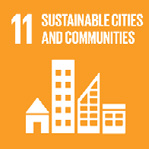
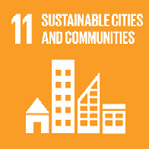
33 | Green Bond Annual Report 2021/2022
Āpitihanga 2 – Te uaratanga o ngā rawa māraurau
Appendix 2
Value of eligible assets at 30 June 2022
No. Eligible asset Eligible asset Eligible
Climate Bond standard UN SDG
Te Tāruke-
Asset value
Asset value Future spend
CBI eligible
details
sector
(CBS) criteria/GBP
alignment
ā-Tāwhiri:
(book value) (project cost) (project cost)
asset
(see
Auckland alignment
Auckland’s
NZ$m
NZ$m
NZ$m
Council’s
Climate Plan
Sustainable
alignment
Finance
Framework)
1
Electric
Original rolling Low carbon
GBP: Clean transportation
Ikiiki, Transport
$436.9
N/A
None
Yes
multiple units
stock of
transport
CBI: Transport, public
electric trains
passenger transport,
(commenced
trains - rolling stock and
operations in
vehicles for electrified
2014)
public transport, such
as electrified rail, trams,
trolleybuses and cable
cars
2
Electric
Second lot of 15 Low carbon
GBP: Clean transportation
Ikiiki, Transport
$72.0
N/A
None
Yes
multiple units
rolling stock of transport
CBI: Transport, public
electric trains
passenger transport,
(commenced
trains - rolling stock and
in 2017)
vehicles for electrified
public transport, such
as electrified rail, trams,
trolleybuses and cable
cars
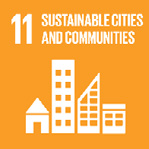
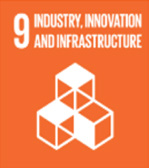
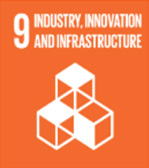
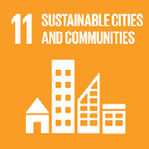
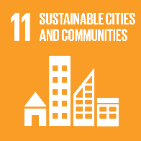
34 | Green Bond Annual Report 2021/2022
Appendix 2: Value of eligible assets at 30 June 2022 (continued)
No. Eligible asset Eligible asset Eligible
Climate Bond standard UN SDG
Te Tāruke-
Asset value
Asset value Future spend
CBI eligible
details
sector
(CBS) criteria/GBP
alignment
ā-Tāwhiri:
(book value) (project cost) (project cost)
asset
(see
Auckland alignment
Auckland’s
NZ$m
NZ$m
NZ$m
Council’s
Climate Plan
Sustainable
alignment
Finance
Framework)
3
Electric
New lot of 23
Low carbon
GBP: Clean transportation
Ikiiki, Transport
$6.8
N/A
$273.9
Yes
multiple units
rolling stock of transport
CBI: Transport, public
(unaudited)
electric trains
passenger transport,
(commenced
trains - rolling stock and
in 2022)
vehicles for electrified
public transport, such
as electrified rail, trams,
trolleybuses and cable
cars
4
Public cycleway Public cycle
Low carbon
GBP: Clean transportation
Ikiiki, Transport
N/A
$93.7
None
Yes
assets
and walking
transport
CBI: Transport, public
infrastructure
passenger transport,
(commenced
infrastructure - public
construction in
walking and cycling
2012)
infrastructure and cycling
schemes
5
City Rail Link
New rail tunnel Low carbon
GBP: Clean transportation
Ikiiki, Transport
N/A
$1,457.1
$752.5
Yes
and station
transport
CBI: Transport, public
(unaudited)
to enhance
passenger transport,
network
infrastructure - dedicated
and enable
infrastructure for
higher electric
electrified public transport
train use
(commenced
construction in
2016)
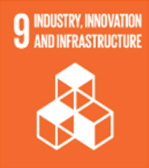


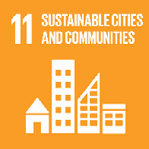
35 | Green Bond Annual Report 2021/2022
Appendix 2: Value of eligible assets at 30 June 2022 (continued)
No. Eligible asset Eligible asset Eligible
Climate Bond standard UN SDG
Te Tāruke-
Asset value
Asset value Future spend
CBI eligible
details
sector
(CBS) criteria/GBP
alignment
ā-Tāwhiri:
(book value) (project cost) (project cost)
asset
(see
Auckland alignment
Auckland’s
NZ$m
NZ$m
NZ$m
Council’s
Climate Plan
Sustainable
alignment
Finance
Framework)
6
Wiri Electric
Maintenance
Low carbon
GBP: Clean transportation
Ikiiki, Transport
$77.3
N/A
None
Yes
Train Depot
depot for
transport
CBI: Transport, public
electric trains
passenger transport,
to improve
infrastructure - dedicated
reliability
infrastructure for
of network
electrified public transport
and enable
higher electric
train use
(commenced
construction in
2012)
7
Manukau Bus
Transfer station Low carbon
GBP: Clean transportation
Ikiiki, Transport
$11.2
N/A
None
No
Interchange
connecting bus transport
CBI: Transport, public
users to the rail
passenger transport,
network and
infrastructure - dedicated
other buses
infrastructure for
(commenced
electrified public transport
construction in
2016)
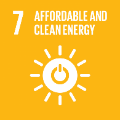
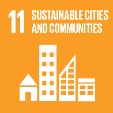
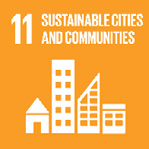
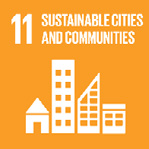
36 | Green Bond Annual Report 2021/2022
Appendix 2: Value of eligible assets at 30 June 2022 (continued)
No. Eligible asset Eligible asset Eligible
Climate Bond standard UN SDG
Te Tāruke-
Asset value
Asset value Future spend
CBI eligible
details
sector
(CBS) criteria/GBP
alignment
ā-Tāwhiri:
(book value) (project cost) (project cost)
asset
(see
Auckland alignment
Auckland’s
NZ$m
NZ$m
NZ$m
Council’s
Climate Plan
Sustainable
alignment
Finance
Framework)
8
Street lighting LED upgrade to Energy
GBP: Energy efficiency
Ikiiki, Transport
$63.9
N/A
$41.6
No
LED upgrade
reduce energy efficiency
(unaudited)
consumption
(stage 1
completed
2018, stage 2
delivery began
2019)
9
Bledisloe
24 Wellesley
Efficient
GBP: Green buildings
Taiao
$43.5
N/A
None
No
House
Street West,
buildings
hanga, Built
Customer
Auckland
environment
Service Centre (4-star
NABERSNZ
rated
refurbishment
completed in
2014)
10
Auckland
135 Albert
Efficient
GBP: Green buildings
Taiao
$221.0
N/A
None
No
Council Head
Street,
buildings
hanga, Built
Office
Auckland
environment
(4-star
NABERSNZ
rated upgrade
completed in
2015)
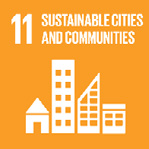
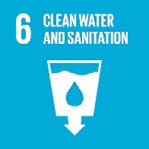
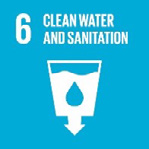
37 | Green Bond Annual Report 2021/2022
Appendix 2: Value of eligible assets at 30 June 2022 (continued)
No. Eligible asset Eligible asset Eligible
Climate Bond standard UN SDG
Te Tāruke-
Asset value
Asset value Future spend
CBI eligible
details
sector
(CBS) criteria/GBP
alignment
ā-Tāwhiri:
(book value) (project cost) (project cost)
asset
(see
Auckland alignment
Auckland’s
NZ$m
NZ$m
NZ$m
Council’s
Climate Plan
Sustainable
alignment
Finance
Framework)
11
Manukau Civic 31 Manukau
Efficient
GBP: Green buildings
Taiao
$35.9
N/A
None
No
Building
Station Road,
buildings
hanga, Built
Auckland (4-
environment
star NABERNZ
rated
refurbishment
completed in
2009)
12
Fred Thomas
Wastewater
Sustainable
GBP: Sustainable
Taiao
$25.7
N/A
None
No
Drive
storage and
water
water and wastewater
hanga, Built
pumping
management
management
environment
station
(commenced
construction in
2016)
13
Hunua
New watermain Sustainable
GBP: Sustainable
Taiao
$350.2
N/A
None
No
watermain
infrastructure
water
water and wastewater
hanga, Built
pipeline
providing
management
management
environment
uninterrupted,
high-quality
water supply
to the growing
Auckland
region
(commenced
construction in
2012)


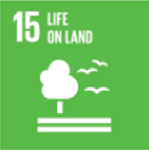
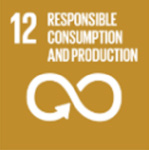
38 | Green Bond Annual Report 2021/2022
Appendix 2: Value of eligible assets at 30 June 2022 (continued)
No. Eligible asset Eligible asset Eligible
Climate Bond standard UN SDG
Te Tāruke-
Asset value
Asset value Future spend
CBI eligible
details
sector
(CBS) criteria/GBP
alignment
ā-Tāwhiri:
(book value) (project cost) (project cost)
asset
(see
Auckland alignment
Auckland’s
NZ$m
NZ$m
NZ$m
Council’s
Climate Plan
Sustainable
alignment
Finance
Framework)
14
Rehabilitation Rehabilitation Sustainable
GBP: Environmentally
Taiao māori,
$132.0
N/A
None
No
of Puketutu
of Puketutu
land use
sustainable management
Natural
Island
Island using
of living natural resources
environment
treated
and land use
biosolids
from Mangere
wastewater
treatment plant
(commenced in
2013)
15
Rosedale
2,700 solar
Renewable
GBP: Renewable energy
Te ngao me
$1.9
N/A
None
No
floating solar
panels
energy
te ahumahi,
array
floating on
Energy and
the Rosedale
industry
Wastewater
Treatment
Plan in Albany,
generating a
quarter of the
energy needed
by the plant
(operating from
2020)
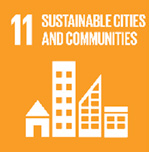
39 | Green Bond Annual Report 2021/2022
Appendix 2: Value of eligible assets at 30 June 2022 (end)
No. Eligible asset Eligible asset Eligible
Climate Bond standard UN SDG
Te Tāruke-
Asset value
Asset value Future spend
CBI eligible
details
sector
(CBS) criteria/GBP
alignment
ā-Tāwhiri:
(book value) (project cost) (project cost)
asset
(see
Auckland alignment
Auckland’s
NZ$m
NZ$m
NZ$m
Council’s
Climate Plan
Sustainable
alignment
Finance
Framework)
16
Te Manawa
5 green star
Efficient
GBP: Green buildings
Taiao
$30.9
N/A
None
No
(Westgate
rated building, buildings
hanga, Built
Multi-purpose opened in 2019
environment
Facility)
Total CBI eligible green bond assets
$593.0
$1,550.8
$1,026.4
(unaudited)
Total non-CBI eligible green bond assets
$916.2
$0.00
$41.6
(unaudited)
Total current green bond eligible assets
$3,060.0
Future planned eligible green asset spend
$1,068.0
Notes:
1. Asset values are shown net of third party (eg. Waka Kotahi) funding received.
2. Future spend values have not been audited.
3. Asset 16 Te Manawa was added to the register at 30 June 2022.
40 | Green Bond Annual Report 2021/2022
Āpitihanga 3 – Te Pūrongo Motuhake a EY mō te Whakaū
Appendix 3
E Y Independent Assurance Report
Independent Limited Assurance Report to the Management of Auckland Council
Indepe
nde nde
pe nt
nde Li
nt mi
Li ted
mi Assurance
ted
Report
Assurance R to
e the
port Manageme
to the
nt of Auckl
Managemen and C
t of A ounci
uckl l
Assurance conclusion
and Council
Ass
Ba
ur
se
an
d
ce
on
con
our
clusion
limite
d assurance procedures, as described in this statement as of 9 September 2022, nothing has come to our attention which causes us to believe that Auckland
As
Co
su
u
r
n
an
cil
ce
’s
con
Su
clusion
stainable
Finance Framework (September 2022) and Green Bond Report have not been presented, in all material respects, fairly and in accordance with the Green
Based on our limited assurance procedures, as described in this statement as of 9 September 2022, nothing has come to our attention which causes us to believe that Auckland
Bond Principles (2021), Green Loan Principles (2021), Sustainability-Linked Bond Principles (2020), Sustainability-Linked Loan Principles (2022) and Auckland Council’s
Cou
Ba ncil
sed ’s
o S
n usta
our in
liabl
m e
it Fi
e n
d a
a nce
ssu Fr
ra a
n me
ce w
porrok (S
ce epte
durem
s,be
a r
s 2d0e22)
scr an
ib d
e G
d re
in en
th Bo
is nd
sta Re
te po
m r
e tn h
t av
a e
s n
ofo t
9 b
e
S en
ep pr
t ese
emb n
e te
r d,
2 in a
022 ll, m
n a
o te
thiria
n l
g re
h sp
a e
s cts,
co f
m a
e i trly
o a
o n
u d
r i
an acc
tten otirda
on n
ce
wh w
ic it
h h th
ca e
u G
sere
s eun
s to believe that Auckland
Bo
S n
Cou d
unP
sta rin
cil
inacipl
’s S
blee
u s (2
sta
Fin 0
in
a 2a
n 1
c )
ble , G
e Frre
Fia e
n n
a
m Lo
n
ew a
ce
o nr P
Fr
k ra(in
m
S cip
e
eptle
wosr (2
k
emb 02
(S
er 1
e ),
20 S
pte u
m
22s)ta
be
inr
an adbi
20
t lity
22
he -Lin
) a
Cli ke
nm d
d a Bo
Gr
te ened
Bo P
nn rin
Bo
ds ci
n
S pl
d
ta eRns e(2
dar0
por2t
d 0 ),
h
v3 S
av
.0ue,sta
n
re in
os a
t bi
be
pe liteyn-Li
ctive n
pr
ly ke
e.
d
se Lo
ntean
d, Pr
in in
acipl
ll e
m s
a (2
te 0
r 2
ia 2
l )r an
e d
sp A
e uckla
cts, f n
a d Co
irly u
a ncil
d ’s
in accordance with the Green
Susta
Bon in
d a
P bl
r e
in Fin
ciplaence
s ( F
2 r
0 a2m
1e)w
, o
Grk
e (S
e ep
n tem
Loa b
n er
P r20
in 22
cip ) an
les d t
(2 he
0
2 Cli
1 m
), a
S te
u Bo
sta n
inds
a S
bi ta
li n
ty da
- rd
Lin v3
ke .0
d , r
Boes
n pe
d ctive
Prin ly
ci .
ples (2020), Sustainability-Linked Loan Principles (2022) and Auckland Council’s
Susta
Scope inable Finance Framework (September 2022) and the Climate Bonds Standard v3.0, respectively.
Scope
Ernst & Young (‘EY’, ‘we’) was engaged by Auckland Council to undertake a limited assurance engagement, as of 9 September 2022, in relation to the Subject Matter and Criteria
Ernst & Young (‘EY’, ‘we’) was engaged by Auckland Council to undertake a limited assurance engagement, as of 9 September 2022, in relation to the Subject Matter and Criteria
Scop
set o
eu
t below.
set out below.
Subject Matter and Criteria
Su
Er
bn
ject
st
M
&
att
You
ern
a
g
nd Crite
(‘EY’,
r
‘w
iae
’) was engaged by Auckland Council to undertake a limited assurance engagement, as of 9 September 2022, in relation to the Subject Matter and Criteria
set
Th o
e u
s t
u be
bje low
ct .
m
The subject matte
a rtt aenrd
a ansso
d aciate
sso d cr
cia it
te er
d ia
cr fo
it re t
r h
iais f liom
r it
t e
h d
is a
lissu
m r
it aendce
a enga
ssur ge
an me
ce n
e t a
n re
ga se
ge t
mou
e t
ntin th
aree ta
se bl
t e
o b
u e
t lo
in w:
the table below:
Subject Matter and Criteria
Sub
Su je
b ct
je M
ct att
Ma er
tt er
Criteria Criteria
The subject matter and associated criteria for this limited assurance engagement are set out in the table below:
Auckla
Au
n
ckla d
n C
d ou
C n
o cil
un’s S
cil’ ust
s Sain
us a
t bl
a e
in Fin
abl a
e nce
Fin Fara
n m
c e
e w
F o
r r
a k (
m S
e e
wpt
o e
r mbe
k (S r
e ptem • The Gre
• e
n Bon
Th d
e P
G rin
e cip
en les (J
Bon u
d ne
Pr 20
in 21
cip )
lean
s d G
(Jure
n en Lo
20 a
2 n
1 P
) rain
n cipl
d Gerse (Fe
en bru
Lo a
a rny 2
Pr02
in 1) r
cipleqsuirem
(Febernuts
a o
ryn:
Subject Matter
ber
Criteria
2021) requirements on:
2022).
• Use of Proceeds
2022).
• Use of Proceeds
• Process for Project Evaluation and Selection
Au
ckland Council’s Sustainable Finance Framework (September
• Th
• e Green Bond Principles (June 2021) and Green Loan Principles (February 2021) requirements on:
Process for Project Evaluation and Selection
• Management of Proceeds
2022).
•• Use of Proceeds
•
Management of Proceeds
Reporting
•• Process for Project Evaluation and Selection
• Review (G
reeRn Lo
epoarn tiPnrin
g ciples)
• The Sustaina
•• bi
lityR-Lin
Man
e k
a
vie ed
ge
w Lo
m
(G a
er n
ne P
te r
o
n in
f ci
P
Lo pl
ro
a e
n s (Ma
ceeds
Prin r ch
cipl 2
e 0
s)2 2) and the Sustainability-Linked Bond Principles
(June 2020)
•
•
requi
The R r
Seem
upo e
s r n
ta tits
inn o
ag n:
bility-Linked Loan Principles (March 2022) and the Sustainability-Linked Bond Principles
• Selectio(n
J o
u fn Key P
e 20 erf
20)o rrma
eq nce
uir I
e n
mdi
e ca
nt to
s ros
• Review (Green Loan Principl
n: es)
• Calibration of Sustainability Performance Targets
• Th
• e Su
Sesta
le ina
ctio bi
n li
o ty
f -Lin
Key k
Pedr Lo
for an
ma P
n rin
ce Ici
n pl
di es
ca (Ma
tors r ch 2022) and the Sustainability-Linked Bond Principles
• Loan/Bond characteristics
(J
• une 2020) requirements on:
Calibration of Sustainability Performance Targets
• Reporting
•• Selection of Key Performance Indicators
•
Loan/Bond characteristics
Verification
•• Calibration of Sustainability Performance Targets
Auckland Council’s Annual Green Bond Report as at 30 June 2022, • Auckland Cou
ncil’s
R eSus
po ta
rti in
n agbl
e Finance Framework (September 2022)
in particular;
• Climate Bonds
•• Stan
Lo da
anrd (v
/Bo 3
n .0) (
d ch ‘CBS
ara ’)
cteristics
Verification
• •
Auckland Council’s Annual Green Bond Report as at 30 June 2022,
Au Re
ckla po
n rtin
d Co g
u ncil’s Sustainable Finance Framework (September 2022)
in particular;
• •
ClimVe
a r
te ifica
Bontio
ds n
Standard (v 3.0) (‘CBS’)
• Auckland Council’s Sustainable Finance Framework (September 2022)
A mem
Au ber f
cklairm
n of
d E
C rns
ou t &
n Y
ciloung G
’s Anlobal
nu Li
a m
l iGted
re en Bond Report as at 30 June 2022,
in particular;
• Climate Bonds Standard (v 3.0) (‘CBS’)
A member firm of Ernst & Young Global Limited
A member firm of Ernst & Young Global Limited
41 | Green Bond Annual Report 2021/2022
EY Independent Assurance Report
• Valuation of Eligible Assets
• Asset-specific Criteria issued by the Climate Bonds Initiative and relevant to some of the Eligible
• Green and/or sustainability credentials listed for Eligible
Assets.
Assets.
Management Responsibility
The management of Auckland Council is responsible for the collection, preparation, and presentation of the Subject Matter. This responsibility includes establishing and maintaining
internal controls relevant to the preparation and presentation of the Subject Matter that is free from material misstatement, whether due to fraud or error, selecting and applying
appropriate accounting policies; and making estimates that are reasonable in the circumstances.
Assurance Practitioner’s Responsibility
Our responsibility is to express a conclusion on whether anything has come to our attention that causes us to believe that the subject matter has not been presented, in all material
respects, fairly and in accordance with the criteria detailed above. Our assurance engagement has been planned and performed in accordance with the International Standard on
Assurance Engagements (New Zealand) 3000:
Assurance Engagements Other than Audits or Reviews of Historical Financial Information (‘ISAE (NZ) 3000’).
Level of Assurance
Procedures performed in a limited assurance engagement vary in nature and timing from, and are less in extent than for, a reasonable assurance engagement. Consequently,
the level of assurance obtained in a limited assurance engagement is substantially lower than the assurance that would have been obtained had a reasonable assurance
engagement been performed. While we considered the effectiveness of management’s internal controls when determining the nature and extent of our procedures, our
assurance engagement was not designed to provide assurance on internal controls. Our procedures did not include testing controls or performing procedures relating to
checking aggregation or calculation of data within IT systems.
Our Approach
Our assurance procedures performed included, but were not limited to:
• Assessing Auckland Council’s Sustainable Finance Framework (September 2022) against the Green Bond Principles (June 2021), the Green Loan Principles (February 2021),
the Sustainability- Linked Loan Principles (March 2022) and the Sustainability- Linked Bond Principles (June 2020).
• Assessing the eligibility of assets included in Auckland Council’s Green Bond Report against Auckland Council’s Sustainable Finance Framework (September 2022).
• Checking reported use of proceeds back to evidence on asset values and refinancing arrangements.
• Assessing the eligibility of CBS-eligible assets included in Auckland Council’s Green Bond Report against the Climate Bond Taxonomy and sector eligibility criteria.
• Assessing the value of Eligible Assets against those reported in Auckland Council’s Green Bond Report.
• Assessing the total value of all Eligible Assets to ensure a value equal to or greater than the value of proceeds of the bonds.
• Assessing Auckland Council’s Green Bond Report against the CBS v3 reporting requirements.
• Interviewing selected personnel to understand relevant Auckland Council policies, systems and procedures.
• Obtaining and reviewing documents supporting assertions made in the Subject Matter.
• Seeking management representation on key assertions.
A summary of our assurance procedures and our key observations from each procedure can be found in Annex A of this statement.
A member firm of Ernst & Young Global Limited

42 | Green Bond Annual Report 2021/2022
EY Independent Assurance Report
Limitations
There are inherent limitations in performing assurance – for example, assurance engagements are based on selective testing of the information being examined – and it is possible
that fraud, error, or non-compliance may occur and not be detected. There are additional inherent risks associated with assurance over non-financial information including
reporting against standards which require information to be assured against source data compiled using definitions and estimation methods that are developed by the reporting
entity. Finally, adherence to ISAE (NZ) 3000 and Green/Sustainability Loan/Bond Principles is subjective and will be interpreted differently by different stakeholder groups.
Our assurance was limited to the Auckland Council’s Sustainable Finance Framework (September 2022) and Green Bond Report and did not include statutory financial statements.
Our assurance is limited to policies and procedures in place as of 9th of September 2022. The firm performs other Advisory engagements for Auckland Council. Other than these
Advisory engagements the firm has no other relationships with, or interests in, Auckland Council.
Use of Report
Our responsibility in performing our assurance activities is to the Management of Auckland Council only and in accordance with the terms of reference for this engagement as
agreed with them. We do not therefore accept or assume any responsibility for any other purpose or to any other person or organisation, with the exception of the Climate Bonds
Initiative. Any reliance any such third party may place on the Auckland Council’s Green Bond Programme is entirely at its own risk. No statement is made as to whether the criteria
are appropriate for any third-party purpose.
Independence
In accordance with APES 110
Code of Ethics for Assurance Practitioners, the firm and all professional personnel involved in this engagement have met the independence
requirements of New Zealand or International professional ethical requirements. Our team has the required competencies and experience for this assurance engagement.
Pip Best
EY Climate Change and Sustainability Services Partner
09 September 2022
A member firm of Ernst & Young Global Limited
43 | Green Bond Annual Report 2021/2022
EY Independent Assurance Report
Annex A
We provide selected observations aligning to the Green Bond Principles (June 2021), the Green Loan Principles (February 2021), the Sustainability- Linked Loan Principles (March
2022) and the Sustainability- Linked Bond Principles (June 2020) core components, to provide the reader with further understanding on how Auckland Council’s Sustainable
Finance Framework (September 2022) meets the Criteria. These observations are not intended to detract from our conclusion provided above.
Green Bond Principles (June 2021) and Green Loan Principles (February 2021)
GLP / GBP
section
Significant process
Findings
1
Use of Proceeds
► The Subject Matter states that proceeds raised from sustainable financing will be used for financing and refinancing of eligible green projects
and assets that have positive social, governance or environmental outcomes and contribute to a low carbon and climate resilient future.
► As the Subject Matter consists of the Sustainable Finance Framework alone, we did not review specific legal documentation for sustainable
lending facilities or bonds to consider whether use of proceeds were appropriately described.
► The relevant green and social eligible project categories described in the Subject Matter consist of:
► Renewable Energy
► Energy Efficiency
► Climate Change Adaptation
► Sustainable Water Management
► Efficient Buildings
► Waste Management
► Sustainable land-use
► Low Carbon Transport.
2
Process for Evaluation and
► The Subject Matter provides a description of the alignment between Auckland Council’s Te Tāruke-ā-Tāwhiri: Auckland’s Climate Plan and the
Selection of Projects &
finance raised through their sustainable finance mechanisms (e.g., bonds) that the Subject Matter facilitates.
Assets
► The Subject Matter explains how responsibility and accountability for evaluation and selection of Projects falls to the Treasury Management
Steering Group (‘TMSG’) including ensuring the continued compliance of the framework and associated green bonds and loans to the relevant
standards.
► Alongside ensuring alignment of assets to the eligible project categories above, the TMSG is responsible for considering, for the eligible projects
and assets:
► The current source of finance (budgeted and/or allocated) to determine ease and cost implications of possible re-financing
► The alignment with the Auckland Plan 2050 and Te Tāruke-ā-Tāwhiri: Auckland’s Climate Plan objectives
► The environmental and/or social risks associated with the assets
► Where the council chooses, conformance with any other principles, standards or tools (such as the Climate Bonds Standard (CBS) and the
EU Taxonomy) that are or become commonplace and highly regarded in the market.
3
Management of Proceeds
► The Subject Matter details how Auckland Council will track the receipt and use of proceeds using internal reporting systems. This includes
ensuring that proceeds derived from each tranche of CBI-certified , and each green bond and loan are allocated, tracked and reported
separately to proceeds generated from other loans and bonds.
A member firm of Ernst & Young Global Limited
44 | Green Bond Annual Report 2021/2022
EY Independent Assurance Report
GLP / GBP
section
Significant process
Findings
► The Subject Matter communicates to investors how proceeds from green bonds can be temporarily invested to the extent these have not yet
been used in green assets (i.e., unallocated proceeds).
4
Reporting
► The Subject Matter states that the following will be included in reporting:
► a brief description of the eligible assets and a current list of eligible assets, along with their values
► a summary of the environmental outcomes that have been delivered by the eligible assets
► qualitative and, where feasible, quantitative performance measures as part of reporting on the impact of the eligible asset
► key underlying methodology and/or assumptions used in the quantitative determination for any performance indicators or measures.
► The Subject Matter states that this reporting will be carried out on an annual basis and includes specific timings for disclosure items and the
location that this reporting can be found online.
5
Review
► The Subject Matter states that post-issuance allocation reporting assurance against the Green Bond and Green Loan Principles will occur at
least once during the tenor of each green bond and loan.
► The Subject Matter also states that Auckland Council may seek other forms of independent review, such as second party opinions and
evaluations from organisations such as rating and carbon reporting agencies and, or any other form of independent review that become
accepted by the market.
A member firm of Ernst & Young Global Limited
45 | Green Bond Annual Report 2021/2022
EY Independent Assurance Report
Sustainability- Linked Loan Principles (March 2022) and Sustainability- Linked Bond Principles (June 2020)
SLLP / SLBP
section
Significant process
Findings
1
Selection of Key
► The Subject Matter states that the following will be considered in determining KPIs for SLLs:
Performance Indicators
► Materiality (to Auckland Council's operations)
► Measurability
► Ability to be verified by an external reviewer
► Availability of historic data
► The Subject Matter provides examples of KPIs that are designed to drive cohesiveness between Auckland Council’s Green Bonds/Loans and
Sustainability Linked Bonds/Loans. Some of these KPIs include but are not limited to:
► Greenhouse gas emissions reduction
► Energy efficiency
► Waste management and minimisation
► Biodiversity
► The Subject Matter requires any Sustainability-Linked Loan or Bond to include a clear definition of the KPI along with the scope, calculation
methodology, baseline definition and relevant industry benchmark (where feasible).
► The Subject Matter requires any KPI selected to align to Te Tāruke-ā-Tāwhiri: Auckland's Climate Plan and relevant strategy.
2
Calibration of Sustainability
► The Subject Matter describes aims for calibrating Sustainability Performance Targets (SPTs) which includes the requirement for the targets to
Performance Targets
be ambitious as determined by historical or peer benchmarking or reference to external frameworks, be in line with the Council’s sustainability
strategy and leadership and be based on a predefined timeline.
► The Subject Matter states that disclosures for Sustainability-Linked Loans or Bonds must include: timelines for measuring and reporting,
baselines for KPIs upon which the SPTs are based, how the SPT aligns with goals/objectives under Te Tāruke-ā-Tāwhiri: Auckland's Climate Plan
and how the Council aims to achieve the SPTs,
3
Loan/Bond Characteristics
► The Subject Matter explains that each Sustainability Linked Bond/Loan will include financial and/or structural characteristics that will
encourage the achievement of the SPTs. These characteristics include:
► The amount of any coupon or margin adjustment
► The SPT testing dates and effective date(s) for any adjustment
► Any fall-back mechanisms in case the SPTs cannot be calculated.
4
Reporting
► The Subject Matter outlines that the Council will provide annual reporting to lenders/investors on sustainability performance against SPTs.
► The Subject Matter states that for Sustainability-Linked Bonds the annual report will be available on the Council’s website along with the
verification report.
5
Verification
► The Subject Matter states Auckland Council’s intention to conduct external reviews for each Sustainability Linked Bond/Loan at least annually.
► The Subject Matter explains that these reviews will be carried out by an external reviewer with expertise prior to issuance and on an ongoing
basis which will be at least annually. This external review may, among other options, be assurance.
A member firm of Ernst & Young Global Limited
46 | Green Bond Annual Report 2021/2022
EY Independent Assurance Report
Annex B
We provide selected observations aligning to Auckland Council’s Sustainable Finance Framework and the Climate Bonds Standard V3.0 to provide the reader with further
understanding on how Auckland Council’s Green Bond Report meets the criteria. These observations are not intended to detract from our conclusion provided above.
Criteria
Section
Findings
Auckland Council Sustainable
Eligible Asset Categories
► The use of proceeds of the bonds toward electrified public transport trains equipment and infrastructure, the CityRail Link,
Finance Framework
cycleway projects, and the Manukau Bus interchange align with the Sustainable Finance Framework eligibility category “Low
carbon transport.”
► The use of proceeds of the bonds towards the LED upgrade of streetlighting aligns with the Sustainable Finance Framework
eligibility category “Energy Efficiency.”
► The use of proceeds of the bonds towards the certified green buildings owned by Auckland Council aligns with the
Sustainable Finance Framework eligibility category “Efficient Buildings”. This includes Te Manawa, a multi-purpose facility in
Westgate that has been added as an eligible asset this year.
► The use of proceeds of the bonds towards the Fred Thomas Drive wastewater pump station and storage and the Hunua 4
watermain project align with the Sustainable Finance Framework eligibility category “Sustainable water management”.
► The use of proceeds of the bonds towards the Puketutu restoration project aligns with the Sustainable Finance Framework
eligibility category “Sustainable land use”.
► The use of proceeds of the bonds towards the Rosedale floating solar array aligns with the Sustainable Finance Framework
eligibility category “Renewable energy.”
Climate Bonds Standard V3.0
Reporting
► Auckland Council commit, in their Sustainable Finance Framework, to reporting at least annually on their bonds and to
making this information publicly available.
► Auckland Council's 2022 Annual Green Bond Report includes a clear breakdown of funds allocation including the total value
of green bonds on issue, the total value of CBI certified green bond assets, the proportion of the proceeds used for financing
versus refinancing and how this funding is allocated to the individual assets.
► The allocation reporting also includes eligibility reporting where each project is assigned to an eligible category. Each of the
eligible assets are explained in detail in the Annual Green Bond Report and the Report includes a specific section on their
broad benefits and any relevant metrics to show the impact the asset is having/their environmental performance . The
Report also provides a geographic reference for assets.
► The Report specifies that the objective of these bonds is to enable funding streams to align with Auckland Council’s climate
response and support the broader shift to a more sustainable financial system .
► Auckland Council confirms in the Annual Green Bond Report that the CBI certified bonds issued are aligned with the Climate
Bonds Standard and that the nominated projects and assets continue to meet the relevant eligibility requirements specified
in Part C of the CBS. The Report provides the expected benefits from the CBS certified assets including qualitative and
quantitative performance measures/outcomes. This is followed by a methodology and assumptions section for each asset
which details how these performance measures/outcomes have been measured.
Part C: Eligibility of
► The use of proceeds of the bonds toward electrified public transport trains, equipment and infrastructure aligns with the
Project and Assets
Climate Bonds Initiative Taxonomy’s “Public Passenger Transport” section through the “Trains” asset type under the asset
A member firm of Ernst & Young Global Limited
47 | Green Bond Annual Report 2021/2022
EY Independent Assurance Report
Criteria
Section
Findings
specifics category of “rolling stock and vehicles for electrified public transport, such as electrified rail, trams, trolleybuses
and cable cars.”
► The use of proceeds of the bonds toward the City Rail Link aligns with the Climate Bonds Initiative Taxonomy’s “Public
Passenger Transport” section through the “Infrastructure” asset type under the asset specifics category of “dedicated
infrastructure for electrified public transport”.
► The use of proceeds of the bonds toward public cycleway assets aligns with the Climate Bonds Initiative Taxonomy’s “Public
Passenger Transport” section through the “Infrastructure” asset type under the asset specifics category of “public walking
and cycling infrastructure and cycling schemes“.
A member firm of Ernst & Young Global Limited
48 | Green Bond Annual Report 2021/2022
EY Independent Assurance Report
Annex C
Auckland Council’s list of CBS-eligible assets
Eligible Projects
Class
Country
Original EMU Rolling Stock
Public Passenger Transport New Zealand
Second lot of EMU Rolling Stock Public Passenger Transport New Zealand
New EMU Rolling Stock
Public Passenger Transport New Zealand
Public cycleway projects
Public Passenger Transport New Zealand
City Rail Link
Public Passenger Transport New Zealand
EMU Depot
Public Passenger Transport New Zealand
Annex D
Auckland Council’s exposure to CBS-eligible assets as at 30 June 2022.
Class
Asset Values (NZDm) –book value Asset Values (NZDm) – project cost
Total
Public Passenger Transport
593
1,551
$2,144
A member firm of Ernst & Young Global Limited



49 | Green Bond Annual Report 2021/2022
Toitū Envirocare - Te Arotake i te Pāpātanga
Appendix 4
Toitū Envirocare – Review of Impact
R E V I E W O F I M P A C T A S S E S S M E N T E M I S S I O N S
For organisation:
A U C K L A N D C O U N C I L
Date: 21st September 2022
Auckland Council has drafted content within an Impact Assessment section of their Green Bond Annual Report FY2022, which provides details on the contribution
that selected asset developments contribute towards a reduction or avoidance in greenhouse gas emissions.
Toitū Envirocare reviewed* the relevant sections of the report for accuracy of data transfer from the calculation files, and for general readability. The review
checked the work flow and workbook designs, with a focus on the following components: Activity data, Assumptions, Formula calculations, Emissions factors.
Results of the review were articulated back to Auckland council in the form of a short review report, and which concludes the calculations are robust enough for
the scope and intent of the measurements performed.
Toitū considers the methodology appropriate and the workings sufficient for the purpose of the impact communications being made.
Assets reviewed included: Electric trains, Public Cycleway Assets, Street Lighting LED Upgrade, Energy use at all building assets, Watercare floating solar array
*File version: 23-PRO-0205 Green Bond Annual Report 2022_V7_PROOF24HM.pdf
Disclaimer: the service provided was a review and limited to the files and procedures listed and outlined above. This document should not be considered as a verification assurance
statement and no assurance was provided as part of this review.
Toitū Envirocare
0800 366 275 [email address]
toitu.co.nz
Document Outline







































